Graphic Design Trends to Watch For in 2023
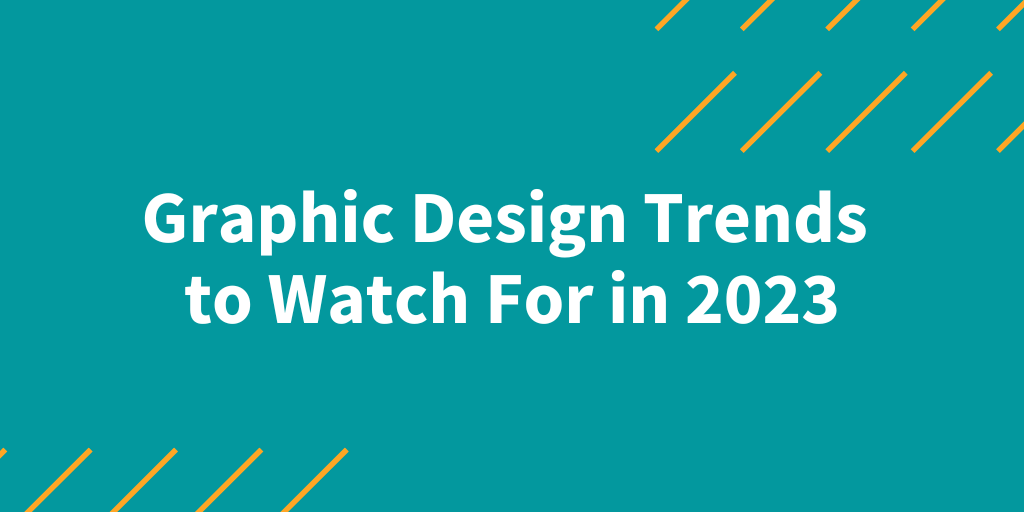
This post was written by our Branding Specialist Chelsée Curé.
With 2022 inching towards its close, ‘tis the reason for recaps. If it’s not Spotify Wrapped, it’s Google releasing the year’s top searches. Is Instagram top nine still a thing? We’re all for reminiscing, but let’s take a minute to see what’s coming in 2023.
Design trends are often a mirror on the current state of the world. With so much going on right now, 2023 is bound to get interesting. Let’s take a look at some of the things we might expect to pop up in graphic design and branding next year.
Colour
Taste the Rainbow
If you were one of the more than 120 million people who accessed Spotify Wrapped this year, you were met with bold saturated colours and crazy mosaic shapes.
As Rasmus Wangelin, Spotify’s global head of brand design stated “Since the pandemic, we’ve all started to embrace much more individuality. No one knows what’s cool anymore, it’s so subjective now.”
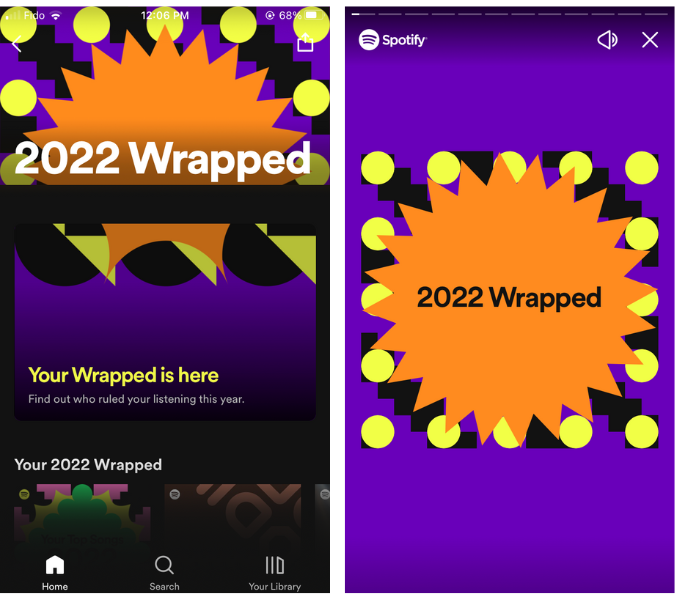
After a number of years of restrictions and uncertainty, neutral, sterile branding just isn’t going to cut it. We’re seeing bold use of colour across most design styles in 2023.
From warm earth tones to bright Barbie pink to neon cyberpunk hues, be on the lookout for vibrant, saturated palettes in 2023.
Dark Mode
2022 saw more apps switching to the dark side. Apps like Youtube, Reddit, and Instagram offer users the option to switch to dark mode and 81% of us are making the change. With the majority of us accessing our smart phones for information, it’s no surprise that graphic designers are catching on.
In 2023, we’re going to be seeing a lot more dark mode, but not just the typical black background with white text, expect bold coloured backgrounds like navy, green, and red.
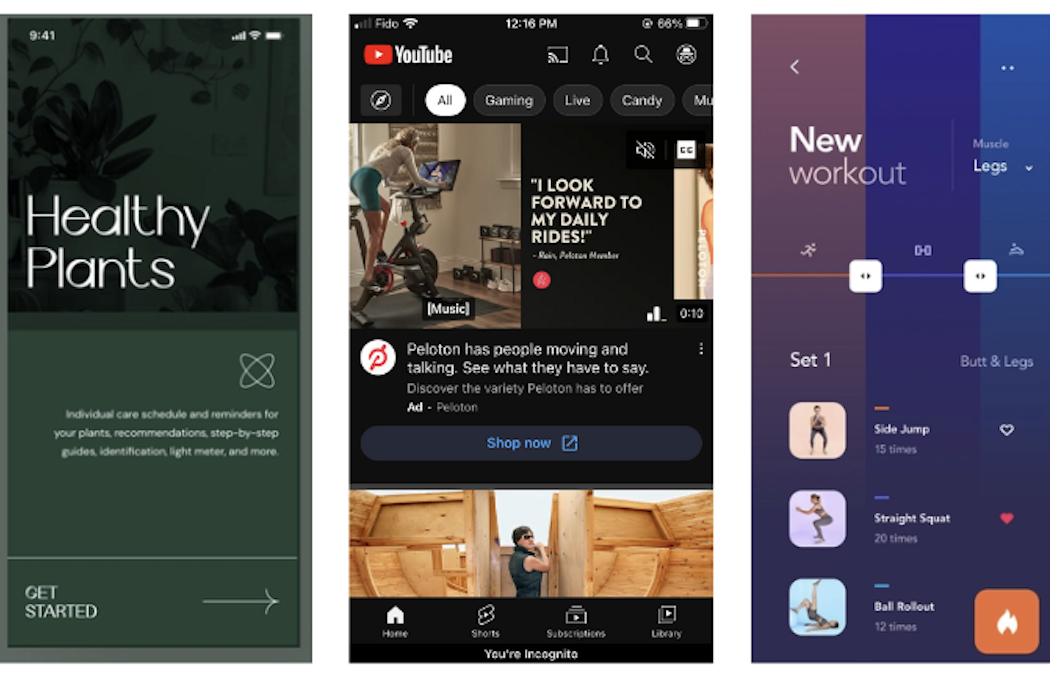
Gradients
The use of gradients have long been used in design. As of late, we’re seeing a lot more use of liquid gradients, which have more shape and visual interest. These gradients offer a retro feel, reminiscent of lava lamps and tie dye.
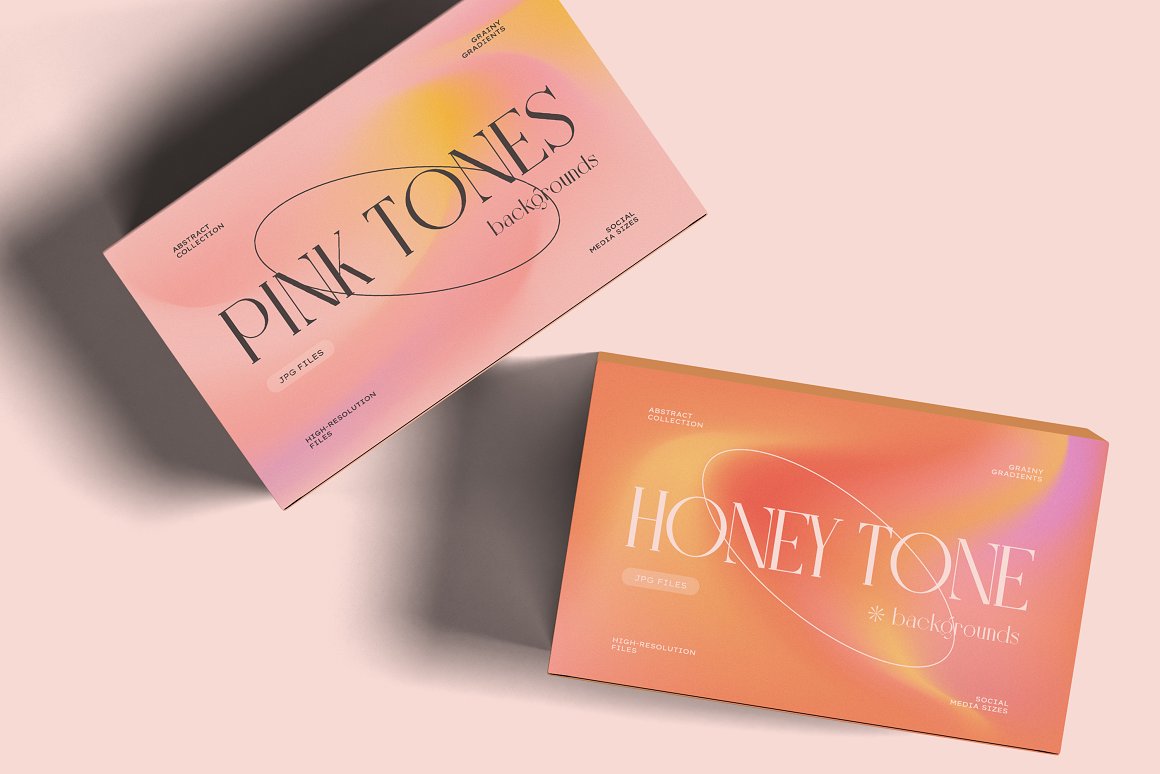
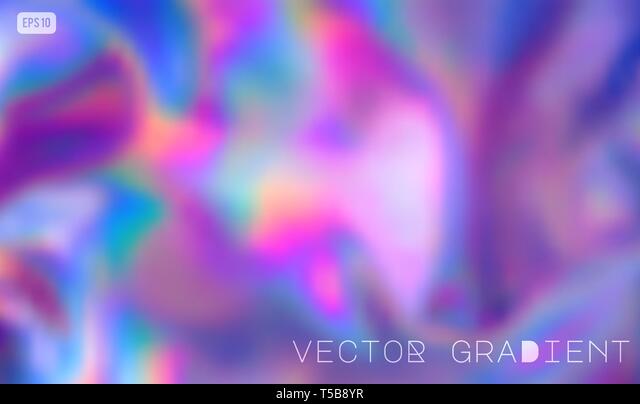
We’re also seeing a lot of gradients used in more futuristic synthwave designs.
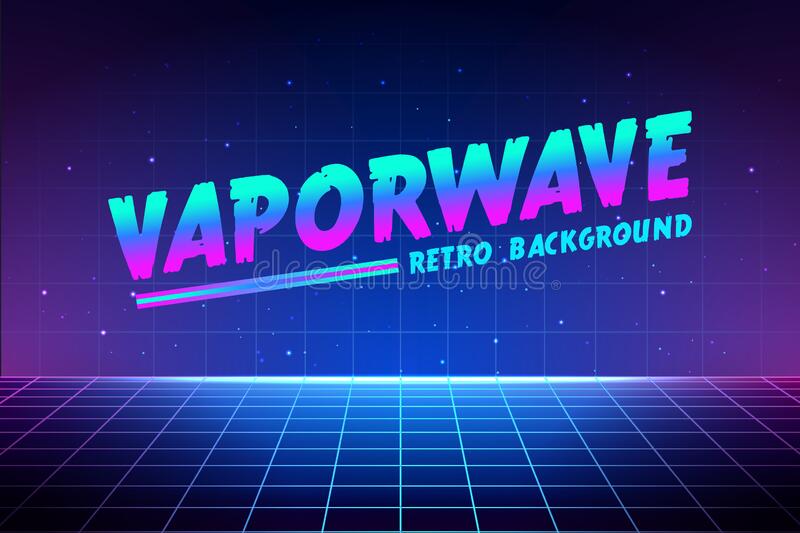
Type
Let the words do the talking
Designers won’t just stop at bold colours for 2023, expect loads of creative expression with type. Whether embracing vintage aesthetic or going full sci-fi, we’re going to see a lot of distorted, embellished and intricate text.
“The medium is the message” is a marketing phrase first coined in the 1960’s but for 2023, the message is the medium, and it will tell its own story.

The Return of Sans Serifs
Serif fonts have been a popular choice over the last few years, but in 2023, sans serif fonts will take center stage. A main driver behind this is inclusivity and accessibility, with most of us accessing information on screens, sans serif fonts are simply easier to read. Screen readers also have an easier time reading sans serif fonts.
While sans serifs will be a popular choice, steer clear of the classics like Helvetica or Arial, instead opt for a little more fun and flair with clean and slightly rounded fonts as seen in Pepsi’s new branding.

Images
Inclusive Images
For graphic designers and marketers, it can be really challenging to source images online that accurately represent the diverse populations we’re trying to reflect. Thankfully more efforts are being made by brands and stock image sites to produce photos and illustrations that better represent the population.
In 2022, graphic design website Canva announced Canva Represents which has a mission to amplify creators and champion diversity. These efforts will surely continue in the new year with more accurate portrayals taking the main stage.

Photographic Branding
Branding is the personality of a company or product and good photography helps share that. Think Nike, and you’ll likely conjure up an image of a determined athlete, sweat dripping down their forehead.
Photos do something illustrations can’t, they bring brands to life. 2023 will see more brands use vivid photography to share their stories.
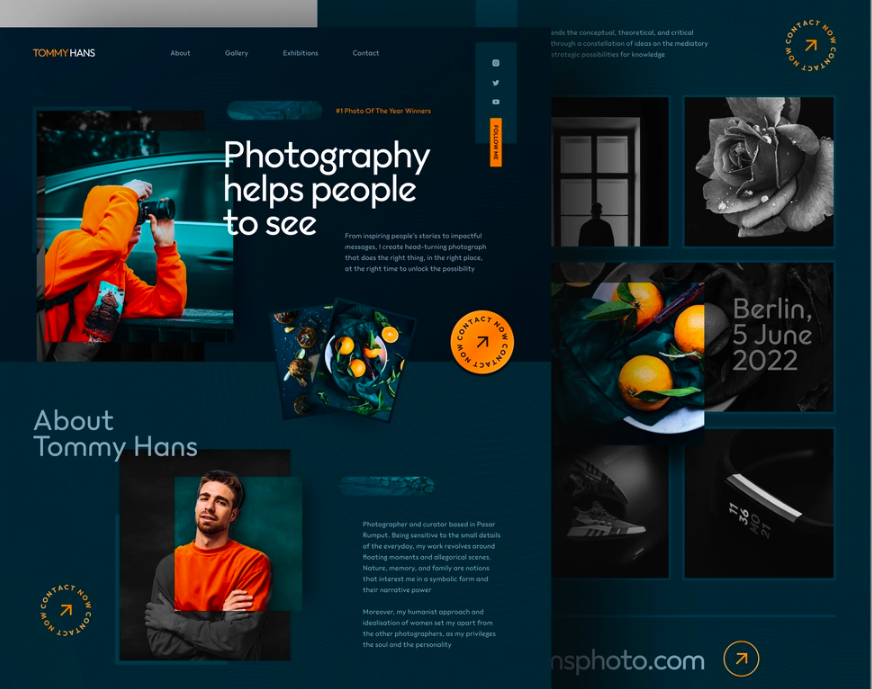
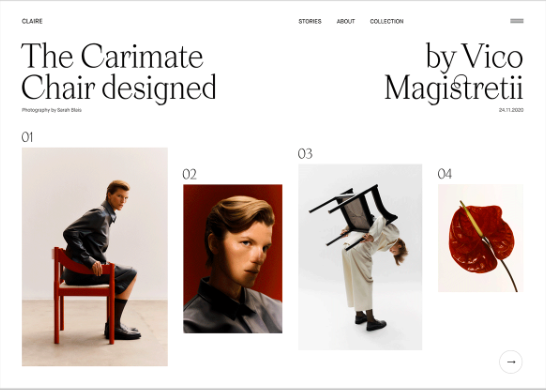
Google’s 2022 Superbowl ad “Seen on Pixel” perfectly sums up what we’re going to see in 2023: inclusivity and beautiful photography.
Themes on the Rise: Tech Central
AI Generated Artwork
If you’ve scrolled your feed in the last few weeks, you’ve surely noticed a flood of AI generated artwork. AI Art generators like Lensa and Midjourney offer users a simple way to get striking digital art pieces at a pretty affordable rate with just a few clicks.
Some controversy remains as to the ethics of such apps as many of the AI are trained using actual artist’s work and learn to replicate art styles. That being said, we predict this is a trend that will continue well into 2023 and seep into graphic design and marketing materials.
The Metaverse
2022 was the year of tech, with the NFT craze, the rise of AI generated artwork and increased interest in the escapism of virtual and augmented reality.
Brands are looking for ways to hop into the Metaverse. Whatsapp integrated virtual avatars, Wendy’s created a character on Fortnite and arcade game pioneer Atari offered a collection of NFTs based on classic games.
This surge of all things cyberspace will seep into graphic design as well. Think fluorescent colours, cyberpunk vibes, glitchy font and 3D illustrations.
Nod to the Noughts
The early 2000s centered majorly around cyberculture. Kick-started with widespread Y2K panic, the noughties brought the world online with the dawn of chat rooms and social media, mp3 players and online gaming.
The early 2000s were filled with forward-thinking optimism - a world of opportunities on the information superhighway. Who didn’t love perfectly curating their myspace page? Now that was branding!
While most millennials will cringe at the thought of the early 2000s aesthetic, there’s no denying that this design style is making a comeback. We’re going to see fluorescent colour palettes, over-the-top typography and a nostalgic flair.
Easy, breezy, beautiful…
With financial uncertainty, climate change and the pandemic taking up our brain space, it’s no surprise many of us see the allure in a more minimalistic, natural or agrarian time.
A stark contrast to the previous future-focused trend prediction, expect to see a lot of earth tones, cheerful botanicals, and clean crisp designs.
Going Green
Sustainability is all the rage. Furniture giant IKEA continues their branding efforts towards a more earth-friendly tone. Just a few weeks ago, they launched their “Green-Friday” Campaign encouraging consumers to live more sustainably.
Other majors brands are talking sustainability too. Starbucks is testing recyclable and compostable cups. Royale now offers toilet paper and paper towels in plastic-free packaging and Amazon recently announced plans to switch to renewable energy for their global data centers. These efforts will surely be better with more “green-focused” packaging and branding.
Cut the Clutter
In the last few years, major brands have opted to simplify their branding. Pringles and Burger King rebranded with minimalist versions of their familiar logos. Other brands like Netflix, McDonalds, and Shell are going as far as just using a symbol or icon.
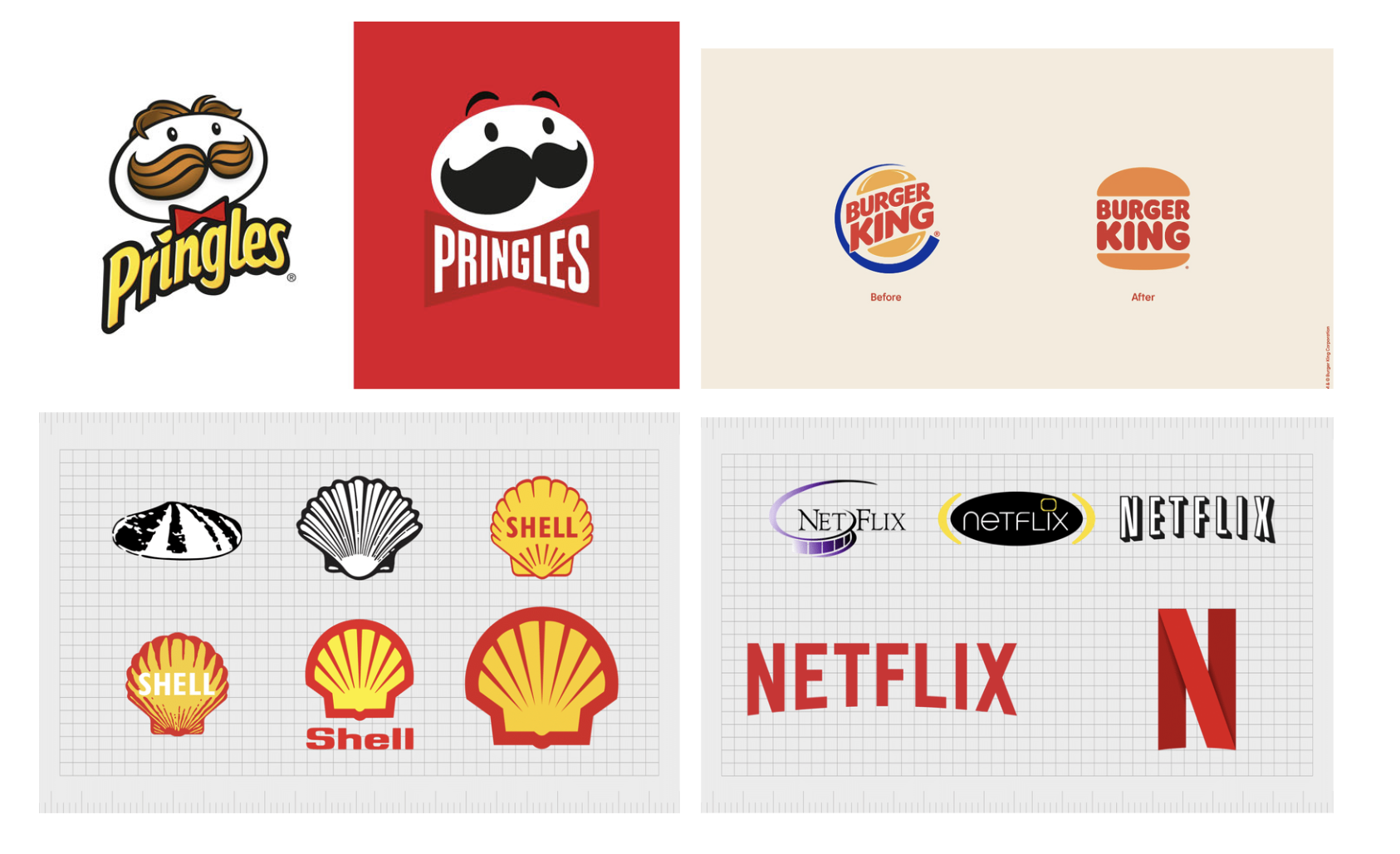
While “less is more” is a common theme in design, a logo is meant to tell a brand’s story and oversimplification can lead to confusion – looking at you Kia (or KN?)
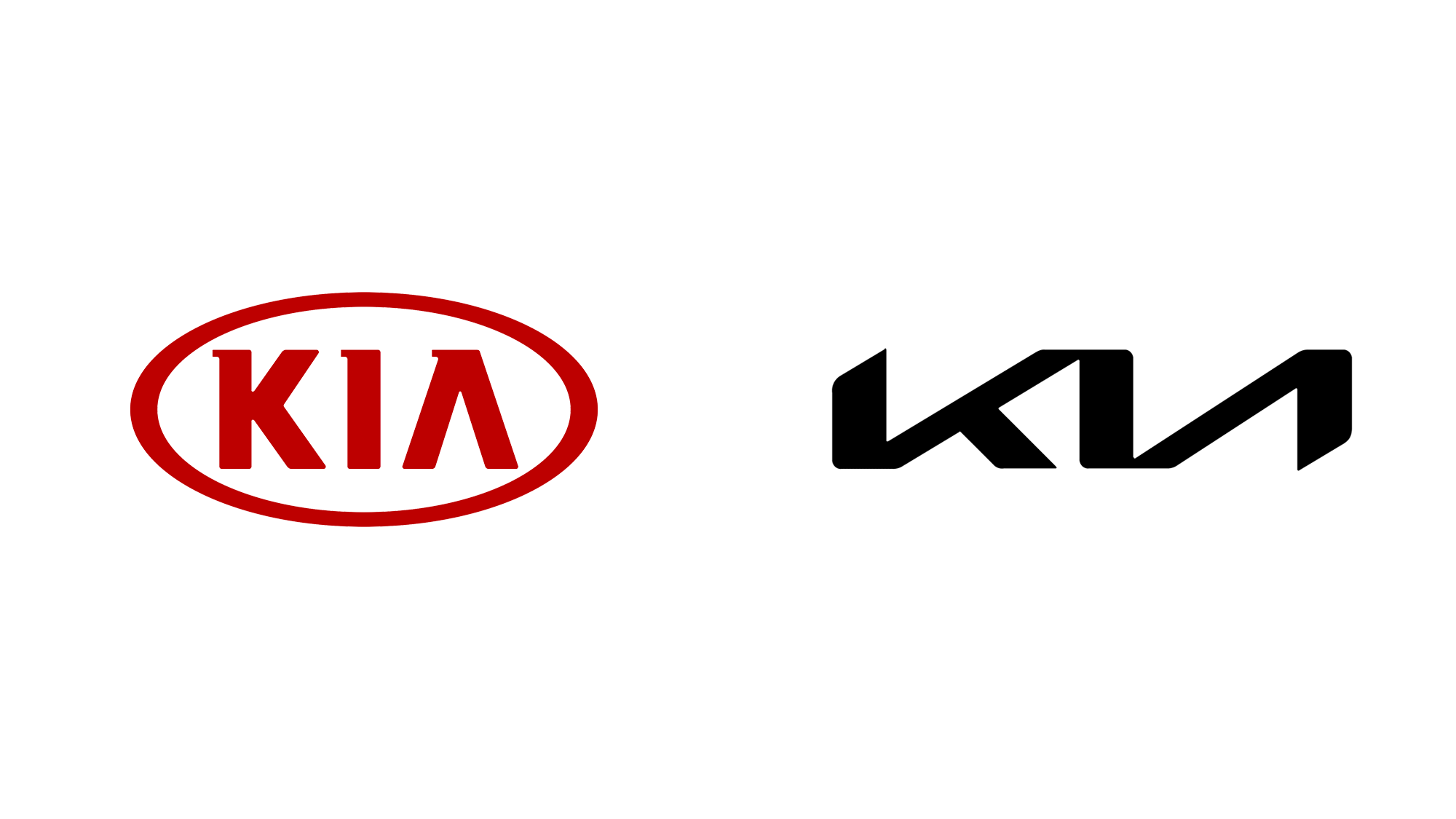
The jury is still out on how simple is too simple, but this trend will likely stick around into 2023 and beyond.
Don't Miss the Latest Graphic Design Trends
While it’s fun to keep an eye out on design trends, it’s also important not to feel like you have to reinvent the wheel. See what’s trending, and if you can incorporate some of these popular themes in your marketing, then great! If the new fads aren’t your vibe, that’s okay too. Good branding is authentic and genuine.
Trends are just that, they come and they go, but consistent clear branding identity stands the test of time.
Ready to see how we can help your designs in 2023? Drop us a line and let’s chat!
Did you like what you just read? Then sign up for our weekly digital marketing email newsletter and get the latest tips, insight, and strategies to grow your business online.
Digital Marketing New Year's Resolutions for 2023
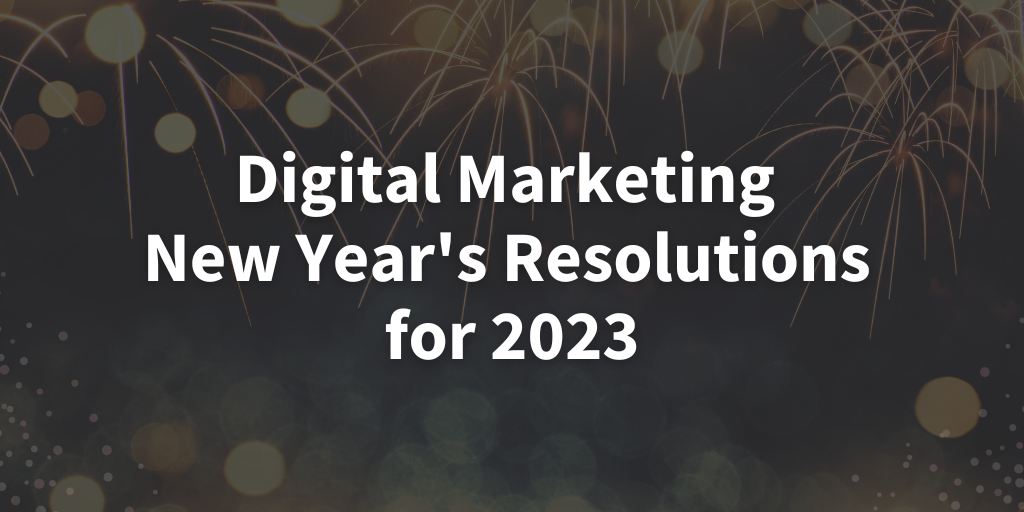
It’s almost that time of year again! As we say “bye” to 2022 and “hi” to 2023, it’s the perfect time to reflect on our business practices and think about ways to make positive changes for the coming year.
While they might seem campy, New Year's resolutions are a great way to reflect on the year that’s passed and plan to make positive changes in the coming 365 days.
Even though most people make New Year’s resolutions, only about 12% achieve them. Why? Because most people aren’t specific enough, or they don’t know how to track their progress or a variety of other reasons.
As the leader of a team invested in helping your business thrive online, I’ve put together a list of achievable digital marketing New Year resolutions based on the latest best practices for 2023.
What is a Digital Marketing Best Practice?
The reality is that there’s no “right” way to do digital marketing, but by leaning on the experts and looking at the data, we can create recipes for success.
I lean on data and sources when developing a strategy for our clients. I use Feedly to keep tabs on the latest news and catch up daily on the latest trends and developments.
(If this sounds like too much work, I feel you. That’s why I started our weekly newsletter that you can subscribe to for all the top tips and updates in digital marketing!)
Best practices are how we make smart, informed decisions about our digital marketing, which is why all of the New Years’ resolutions listed below fall back on a foundation of data.
Ready to level up your online presence in 2023? Then take these resolutions to heart:
Develop Audience Personas
When I talk about a “persona,” I like to describe them as “fake versions of real people” because that’s what they are.
Sure, you might know who your customers are in your head, but taking the time to document and understand them can lead to a 73% increase in all opportunities from online marketing!
Personas help us understand the specific needs that your customers or clients may have on a granular basis and vary depending on whether you have a B2B (business-to-business) or B2C (business-to-consumer) business.
For example, if you run a B2B business, you may want to consider things like:
- What’s their role in the company?
- What kind of buying power do they have?
- How much can they spend?
- What do they care about? (How can we make them look good?)
- Do they need approval for extra spending?
- If yes, who are the other key stakeholders?
- Who are the other key stakeholders (they all need personas, too!)
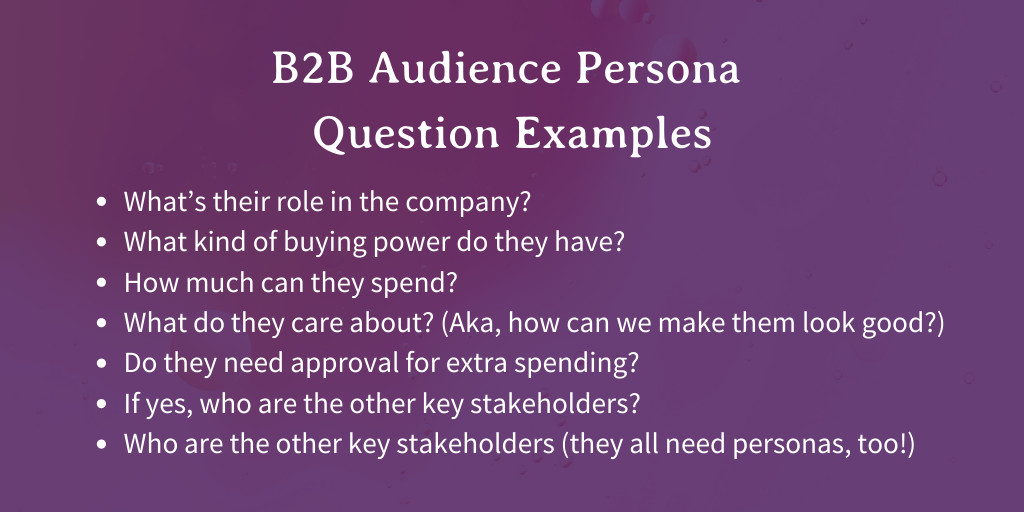
If you run a B2C company, you might want to consider things like:
- Their age, gender, and demographics?
- Their relationship status?
- Their annual income (if possible)?
- How much do they spend at once?
- Are they a repeat buyer? If so, when?
- Are they an impulse buyer, or do they wait for a sale?
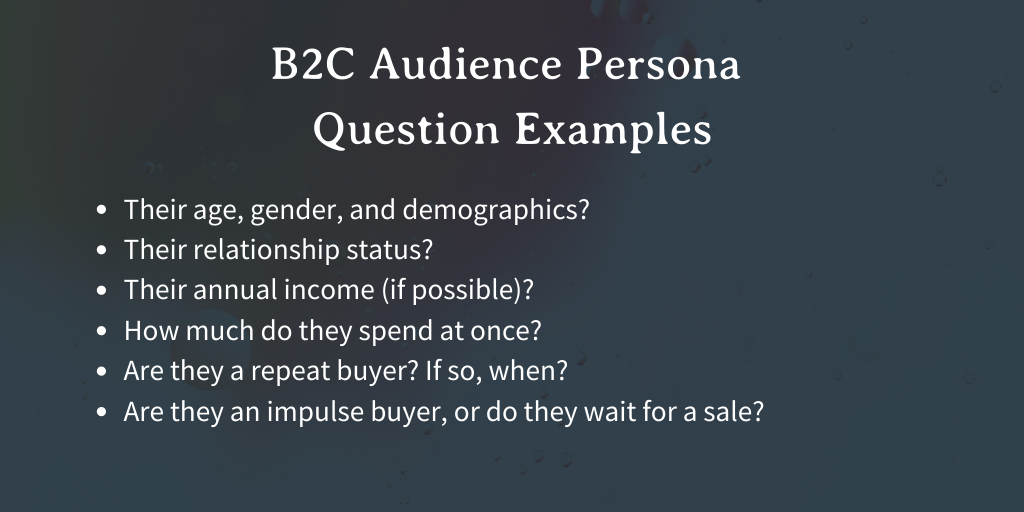
As you can see, personas can get pretty in-depth, which is good! The more you know about your customers and the people involved with how, when, and what they buy, the easier it is to write marketing copy that speaks to their needs.
Reintroduce Your Brand
People want to spend money on things that make them feel good, and one way you can encourage them to buy from you is by using your story in your digital marketing.
This isn’t about tricking people into buying from you! This is about telling a story in a non-salesy way about your brand, how it got started, and what motivates you to keep doing what you do every day.
If people love a brand story, 55% are more likely to buy the product in future, 44% will share the story, and 15% will buy the product immediately.
Talking candidly about how your company got started is a way to create empathy and put a “human” face on your brand, which helps prospective customers and clients empathize with you.
Business is about forming relationships with people. Humans are emotional creatures, and creating a solid emotional connection by being candid and vulnerable will encourage people to support your business.
Be Platform-Specific in Your Content
Maybe the tl;dr version of this could be: stop cross-posting from other social media sources!
Every social media platform is unique. From the image ratios to where the text in a post gets cut off, it’s essential to understand the differences between the platforms and adjust your copy accordingly.
For example, Facebook and Instagram truncate (aka, cut the text off with “...”) after 125 characters, but LinkedIn truncates it after 140 characters.
This means you have a little more space to showcase your core messaging on LinkedIn, so don’t copy/paste the same content to all three.
People also have expectations about the type of content they see on social networks. LinkedIn, for example, is a more business-focused platform, so gifs and terms like GOAT might not resonate with people there as much as they would on a more laid-back platform like Twitter.
Upload More Videos
Confession time: I hated shooting Reels when they started becoming popular.
I’m a writer by trade, and I prefer to do exactly what I’m doing: sit behind a desk with a coffee typing out my thoughts… but that’s not how social media works anymore.
The average user attention span in 2022 was just 8 seconds, and video is the easiest way to stop someone mid-scroll. 80% of consumers want to see more videos from businesses.
Since TikTok exploded onto the scene, it’s time to start getting comfortable in front of the camera and posting video content to all your social platforms.
If you’re feeling overwhelmed with the thought of getting into video (I get it), here are a few things to keep in mind:
- “Raw” videos do best. People like videos that are less edited and feel natural.
- Shorter videos do best. As I said, people’s attention spans are short, so play to this!
- Don’t be afraid to be goofy or silly. The fastest way to make a boring video is to take it too seriously, so have fun with it.
- Don’t overthink it. Really! Content moves fast on the internet, so nobody will penalize you even if you make a less-than-stellar video.
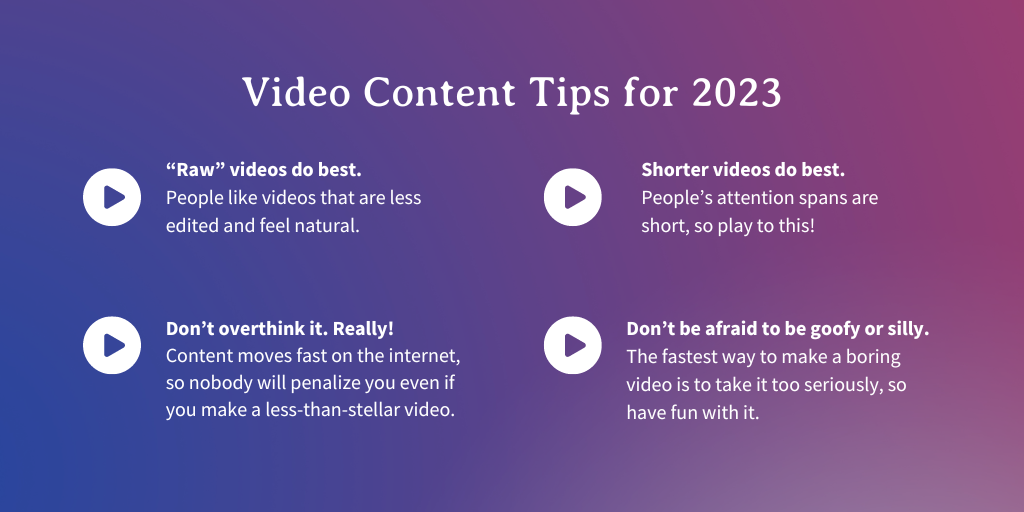
Do a Digital Marketing Audit
It’s never a wrong time to take a critical look at your online presence, and the start of the year offers the perfect opportunity to recognize where you’re doing great and where you could step things up.
How deep your digital marketing audit goes depends on a lot of factors, but here are some things to consider:
- Your audience personas and where they spend time
- The type of content you share on social media
- The strategies you use to publish that content
- Your page growth and outbound engagement strategies
- Your content strategy (blogs, newsletters, etc.)
If you’re unsure where to start, I specialize in digital marketing audits, so feel free to give me a shout, and we can get started!
Review Your Hashtag Strategy
Hashtag strategies change depending on the social network you’re posting to, so it’s essential to review your hashtag strategy and adjust it regularly.
For example, even though technically Instagram allows up to 30 hashtags, the latest research finds that the optimal number of hashtags is between 3 — 5 per post.
For Twitter, the platform suggests sticking to 1-2 targeted hashtags and actively discourages using brand slogans as hashtags.
Another hashtag best practice is only to use hashtags that relate to the content in your post. For example, don’t post about your brand new campaign and use the #ootd (Outfit of The Day) just because it’s a popular hashtag.
At Starling Social, we use a “blended” hashtag strategy. Not sure what that is? Drop us a line, and we can chat about the best hashtag strategy for your brand.
Document Your Digital Marketing Strategy
I firmly believe that documenting our thoughts is how we maintain clarity and consistency in our actions.
Documentation that explains our thinking and process and helps keep everyone on the same page.
It’s also a “power move” if you’re a 100% remote agency like we are at Starling Social since everyone on our team and our client’s teams can access important information.
From a business perspective, effective documentation can give you a leg-up on the competition since only 48% of smaller organizations and 41% of larger companies document their strategies.
Invest in Digital Ads
Getting eyeballs on your website and organic (unpaid) social media posts is more challenging than ever, which makes 2023 the ideal time to start investing in ads to help more clients and customers find your brand.
When it comes to digital ads, there are two “high-level” options to choose from:
Pay-Per-Click (PPC) Advertising
Pay-per-click ads are shown on search engine results pages (SERPs) on sites like Google and Bing.
These ads effectively reach consumers at the bottom of the sales funnel because they’re actively searching for the item or service you offer.
This makes it easier to convert them (aka, get them to buy) because the fact that they’re searching for it shows intent to buy.
Another aspect of PPC advertising is retargeting. Once someone has taken an action on your site like clicking a link or adding something to their cart, you can remind them about that item by showing them retargeting ads on other places around the internet.
Almost 70% of customers “abandon” the items in their carts, but retargeting ads can bring back 26% of those shoppers and get them to complete their purchase.
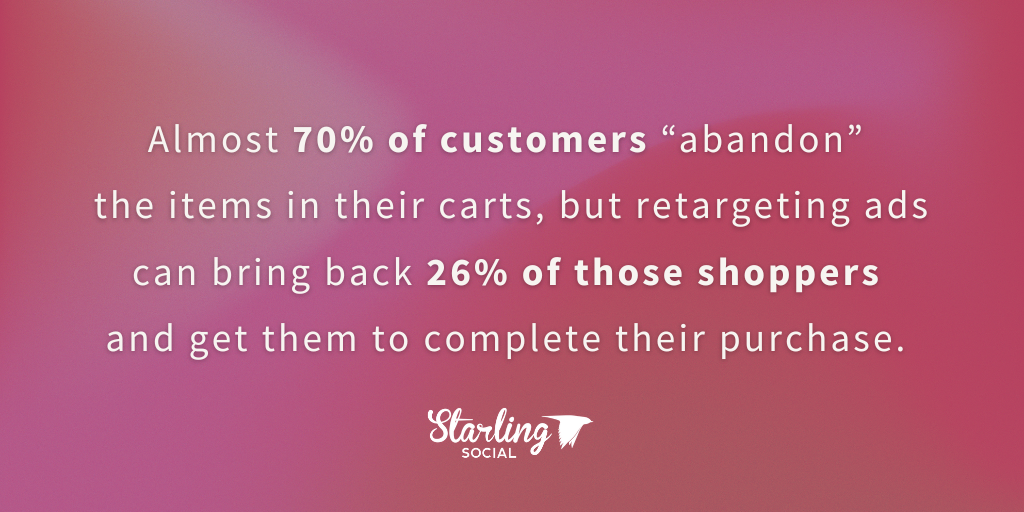
Social Media Ads
Social media ads are a great way of generating brand awareness! Half of adult internet users say that when brands use their data in advertising, it helps them discover (50%) and find (49%) products and services that interest them.
Not only are social media ads effective at helping introduce (or reintroduce) consumers to your brand, but you can also run retargeting campaigns on social media platforms where your audience is most active.
Lean Into Email Marketing
I like to say that “getting someone’s email is like getting the spare key to their house” because it allows your brand to connect with people in the most private place online: their inbox.
I’ve been talking about social media trends and how to stand out in increasingly crowded digital spaces, but email offers a great way to help potential customers see your content.
Part of what makes email marketing so successful is how connected we are to our inboxes. For example, 58% of us check our first thing in the morning!
Whether you’re a B2B or a B2C business, connecting with your audience through their inbox can increase conversions by up to 3x compared to social media marketing.
Cart abandon emails are your besties if you’re a B2C company. More than 40% of all “cart abandon” emails get opened, and out of those opened, 21% of them received click-throughs.
For B2B businesses, newsletters are a great way to keep your audience in the know. If you’re unsure how to write ’em, check out this post!
Make Your New Years’ Resolutions Today
Setting goals for yourself is how you can build and grow your online presence in 2023. Review the points I’ve listed above, sit back, and ask yourself, “what else can I commit to doing so more of my ideal customers find my business?”
A new year is the perfect time to take an objective look at your digital marketing and make strategic, data-driven decisions to help you increase your bottom line in the coming year. If you’re not sure where to start, drop us a line! I’m always happy to chat.
7 Holiday Marketing Campaigns For the 2022 Season
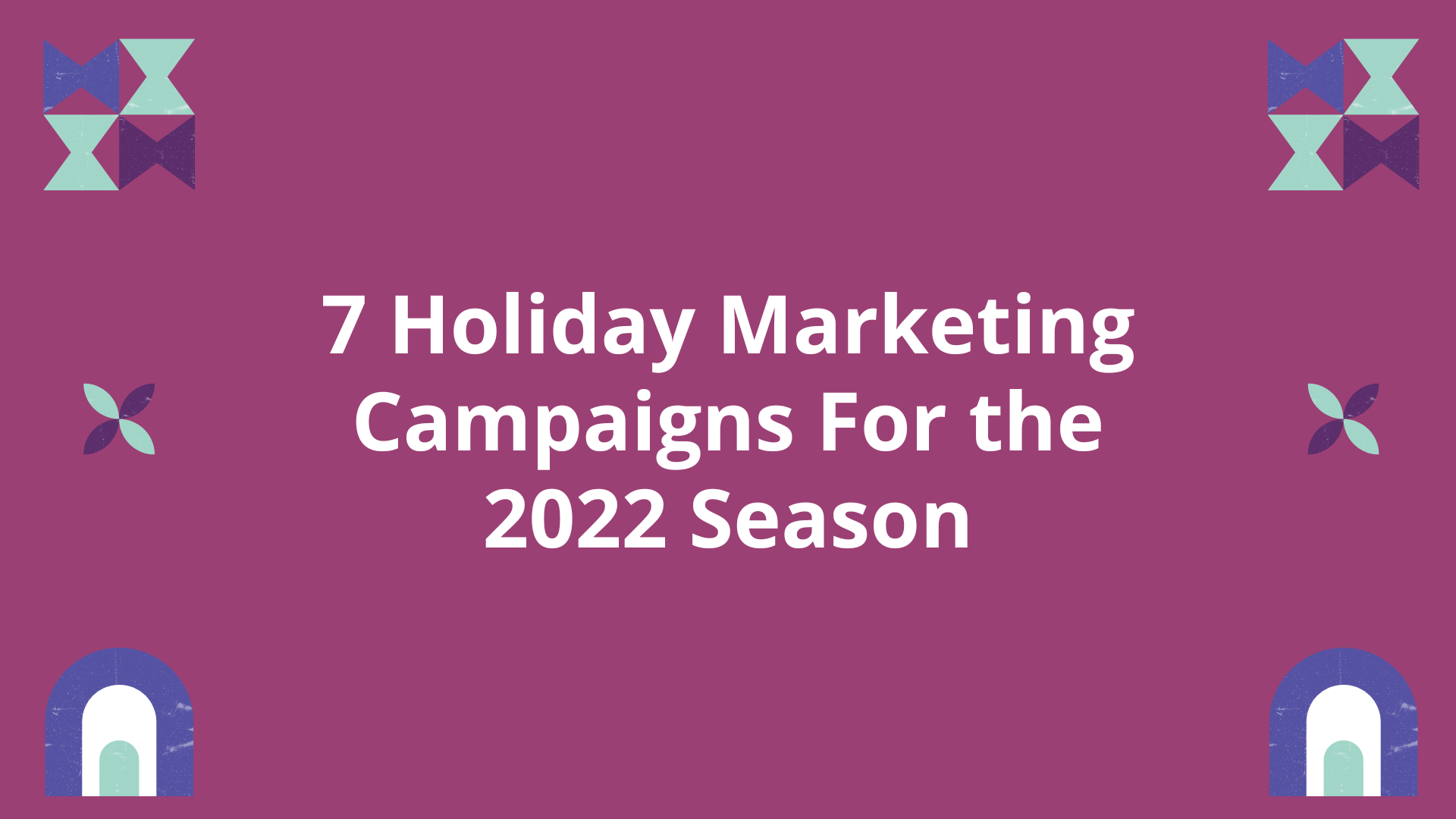
This post was written by our Account Manger Alicia Kurz.
‘Tis the season for holiday marketing campaigns. Sometime between Halloween and the first snowfall, businesses start rushing to capitalize on the spending frenzy that is the holiday season.
Consumers see holiday-themed social media posts, targeted ads, email marketing campaigns, billboards, tv ads, and the list goes on. It’s a lot to take in, but we’ve compiled a list of the most effective campaigns of holidays past and present to give you a little inspiration for your next campaign.
These brands have created campaigns that spread holiday cheer by evoking emotion and promoting sharing. Follow their lead to stand out from the white noise and make your brand stand out.
Google: Home Alone, Again
This ad will leave any Home Alone fans beaming. Thank you, Google for making us feel young again — even if it was just for a minute.
Why it’s effective
Nostalgia is a hell of a drug. It’s easier to appeal to a large target audience when you have a big budget to hire a celebrity, but anyone can use nostalgia to help amp up their holiday marketing campaign. What makes your audience feel good inside?
Coca-Cola Canada: Give Something Only You Can Give
When you see the Coca-Cola commercial around the holidays, you know it’s going to be good. Coke and Santa have been tied together since the 1920s, and their company even helped shape the image of Santa in the 1930s, so it makes sense for Coke to continue this tradition. While Coke definitely isn’t the drink we reach for around the holidays, the commercials still give us the warm and fuzzies.
Why it’s effective
The meaning of the holidays is to spend time with friends and family, not buy expensive gifts. Coke has become so tied to the Christmas season with Santa and those caffeine-guzzling polar bears it doesn’t even need to sell in its holiday ads anymore, making it a perfect ad.
IKEA: The Other Letter
This commercial might need a trigger warning if you are a parent. You WILL cry. IKEA Spain asked a group of kids to write two letters: one to the three kings (Santa equivalent) and one to their parents. No surprise to anyone, all the kids asked their parents for more time together. When the kids are told they can only send one letter, guess which one they choose…
Why it’s effective
Here’s another ad that doesn’t spend any time selling its product. The emotional impact this message leaves on their audience will last, likely creating more loyal customers in the future.
WestJet Christmas Miracle
Who doesn’t love a feel-good story, a little nostalgia, and happy families?
This campaign ran 8-years ago, but it still hits home. The WestJet team took on a sneaky project to perform 12,000 mini miracles during the holiday season. Their goal was to bring joy to over 13,000 people with the help of Santa and the WestJet staff.
We’re not crying — you’re crying! No, okay we are actually crying.
Why it’s effective
This campaign encompasses the spirit of giving. It was an act of kindness, and was completely random — which gives people watching the feeling it could have happened to them. We love how they used Santa to make their lists, and showed the hard and fast work WestJet staff had to do to pull off the gift giving. Imagine shopping for, wrapping and delivering gifts in just a few hours!
Plus, the kids' reactions definitely made us tear up.
TD Bank #MakeTodayBetter
We love a generous marketing campaign. TD Bank encouraged social media users to submit an idea for a project to help the less fortunate. They contacted 24 people, gave them 24 hours and changed 24 communities.
Why it’s effective
TD timed this campaign with the holiday season and changed the perception of its brand to a company that cares about giving back to the community. Their line “it turns out there are a lot of people with great ideas,” makes people feel like they will be heard at TD.
Apple: Make Someone's Holiday
Another ad catered to parents, but is extremely relatable: you need technology to keep the peace when travelling. The ad subtly shows the kids watching movies, colouring, and taking photos on the iPad, but the commercial takes a tear-jerking turn when the girls make a gift on the iPad for their grandpa.
Why it’s effective
The common theme throughout these impactful commercials is emotion. Apple typically focuses on function and how its products make your life better. Here they went for an emotional approach with the iPad as the centre of the story and it paid off.
Nick Offerman’s Yule Log by Lagavulin
I think we’ve cried enough already, so our last example ends on a high note.
If you are going to pick anyone to sell you scotch, I bet Nick Offerman is at least in your top 3. This ad is simply Nick Offerman sitting in a chair drinking Lagavulin for 45 minutes. There is also a 10-hour version! He doesn’t say a word. It’s somehow hilarious, soothing, festive and clever.
Why it’s effective
It’s an alternative to the classic yule log special and an instant conversation starter. The Parks and Rec star famously loved Lagavulin, so it’s an instant tie to the product, and it’s a simple idea that paid off big with over 3 million views.
Maximize Your Holiday Shopping Season
2020 saw a huge shift towards e-commerce sales from the pandemic. A Google survey showed that digital shopping has been cemented with 70% of surveyed participants stating their shopping experience would involve online touchpoints. At the same time, 80% of shoppers are seeking out in-person experiences.
This means making your marketing campaigns cater to both in-store and online shoppers!
With this in mind, communication is key. Make frequently asked questions readily available on your website and social pages. Engage your audience, don’t JUST sell to them. Remind them who is running your business and why you do what you do.
If you are looking for help getting your marketing campaigns off the ground in 2023, reach out to our team of professionals to help you get started here.
10 Black Friday and Cyber Monday Strategy Ideas for Ecommerce Businesses
If you run an eCommerce business, you probably don't need to be reminded that Black Friday and Cyber Monday (BFCM) are two of the most important dates on your calendar.
With $158 billion in projected sales during “Cyber Week” in 2022, finding ways to stand out can seriously impact your business's bottom line.
But how can you stand out among the ads, emails, and thousands of other marketing messages competing for customers' attention? If you're not sure, check out our list of 10 Black Friday and Cyber Monday campaigns ideas:
How to Start Planning a Cyber Week eCommerce Strategy
As we head into the holiday season, here are some things to keep in mind:
Start planning at least 4-6 months in advance. This is critical! You know that these dates are coming since they occur annually, so ensuring that your landing pages are set up, your website is optimized, and your ads are organized and ready to roll is critical for success.
Expect your Facebook ad costs to go up. On average, Facebook's cost per thousand impressions (CPM) go up by 50% during this period, so adjust your advertising budget and expectations accordingly.
Actually, just expect higher ad costs overall. Advertising costs on every channel spike up around Black Friday and Cyber Monday, so anticipate this as you start to plan.
Now that we've covered the basics, let's dig into ____ strategies to help you sell more products this season:
1. Start Building Your Audiences in Advance
"Retargeting" refers to the process of showing relevant ads to people who have visited pages on your site or who have taken an action like adding something to their cart, have saved an item to their wishlists, etc.
To build this audience in advance, run Facebook ads using the "Conversion" objective. This will cause Facebook to show ads to people who are likely to buy as a result of seeing ads, or at the very least, get them to your site so you can retarget them later.
This way, you already have an audience of recent website visitors who you can retarget when BFCM comes around.
2. Beef Up Your Retargeting Campaigns
Almost half of BFCM purchases come from repeat buyers, which is why retargeting is such an essential part of any holiday ad campaign.
During the week leading up to Black Friday, run a retargeting campaign highlighting all the deep discounts and sweet deals you're offering. Since these customers are already familiar with your brand, they're more likely to convert.
3. Promote "Early Access" Black Friday Deals
We've said it before, but we'll repeat it: email marketing is one of the most important elements of any eCommerce strategy.
However, with 116.5 million emails sent out on Black Friday, even the most click-worthy subject lines might not be enough to help you stand out in customers' inboxes.
We suggest sending your BFCM emails a week early to avoid the onslaught. Start emailing exclusive offers and discount codes to your most engaged subscribers in advance.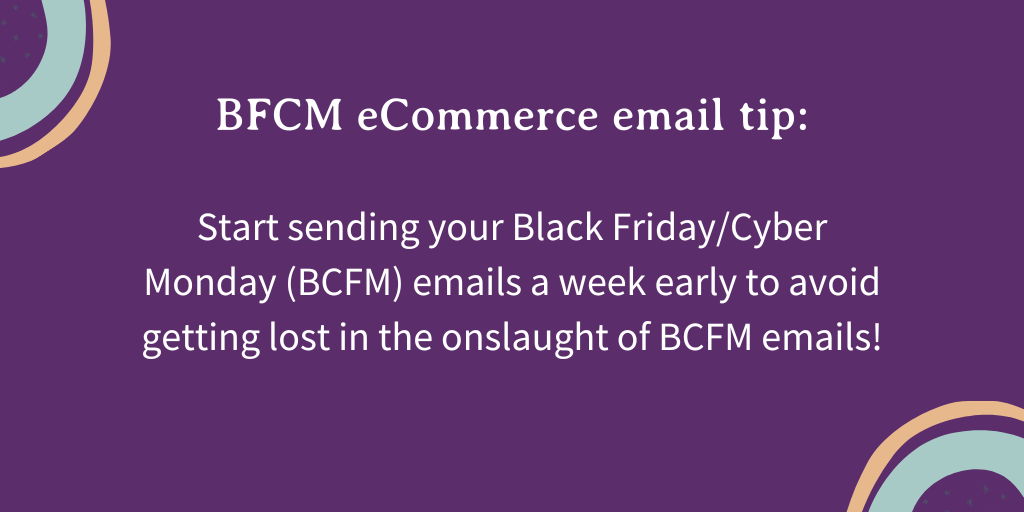
4. Segment Your Email List
Sender, beware: while email marketing can be super effective, it's also bad to spam your subscribers and cause people to unsubscribe or mark your emails as "spam."
Instead of blasting everyone on your list during the lead-up to BFCM, we suggest segmenting your list and breaking it up so you can send personalized, targeted emails your subscribers are excited to receive.
This way, you can avoid sending multiple emails to the same people in a single day and highlight the deals and offers that are most relevant to the person opening the email.
5. Double Down on High-Activity Days
Okay, this might sound like we're contradicting ourselves but hear us out: even though generally we want to avoid sending more than one email a day, on holidays like Thanksgiving, Black Friday, and Cyber Monday, a single email is going to get lost in the shuffle.
Instead of hoping that people slick on your single send, we suggest this approach:
- Send one email in the early morning, so your customer wakes up to a deal
- Send a second email in the middle of the day highlighting different deals
- Send a third email in the late afternoon/early evening with a call-to-action (CTA) that time's running out
It's essential to use different subject lines, emojis, and CTAs in all of these emails, so people don't feel like they're getting bombarded with the same messages all day.
6. Highlight BFCM Across All Your Channels
In the lead-up to BFCM, all your marketing should highlight the deals you'll be offering.
Promote them across your Facebook and Instagram ads, pay-per-click (PPC) campaigns, emails, and social media posts.
When creating content for these campaigns, ensure that your offers are consistent across all your feeds, so customers know what to expect.
7. Double-Check Your Site Speed
One of the biggest reasons people "bounce" away from a site is because it loads too slowly. Just a one-second delay will reduce conversions by 4.42% for each second.
That's why we recommend using a free tool like Google's PageSpeed Insights Tool to help you identify areas that need improving before the glut of holiday traffic hits your site.
8. Remove Unnecessary Plugins and Javascript
This is a bit in the weeds, but hear us out: leaving unused or unnecessary plugins or javascript on your site can slow it down, so work with your web developers to audit your site in the months leading up to BFCM to make sure any unused software has been removed.
9. Audit Your Product Pages
The weeks leading up to BFCM are the perfect time to give your product pages a facelift and ensure they're as enticing as possible.
Some things to look for are:
- Are all the images high-resolution?
- Do they show the product(s) being used in various settings?
- Do they showcase all available colours or styles?
- Are the product descriptions clear and SEO-optimized?
- Is the CTA clear and engaging?
10. Use Google's Address Auto-Filler at Checkout
This is one of our favourite tips to help move customers through the conversion funnel as fast as possible!
This plugin automates adding someone's address to the checkout page, saving them time and reducing the likelihood of opting out of the purchase before finishing.
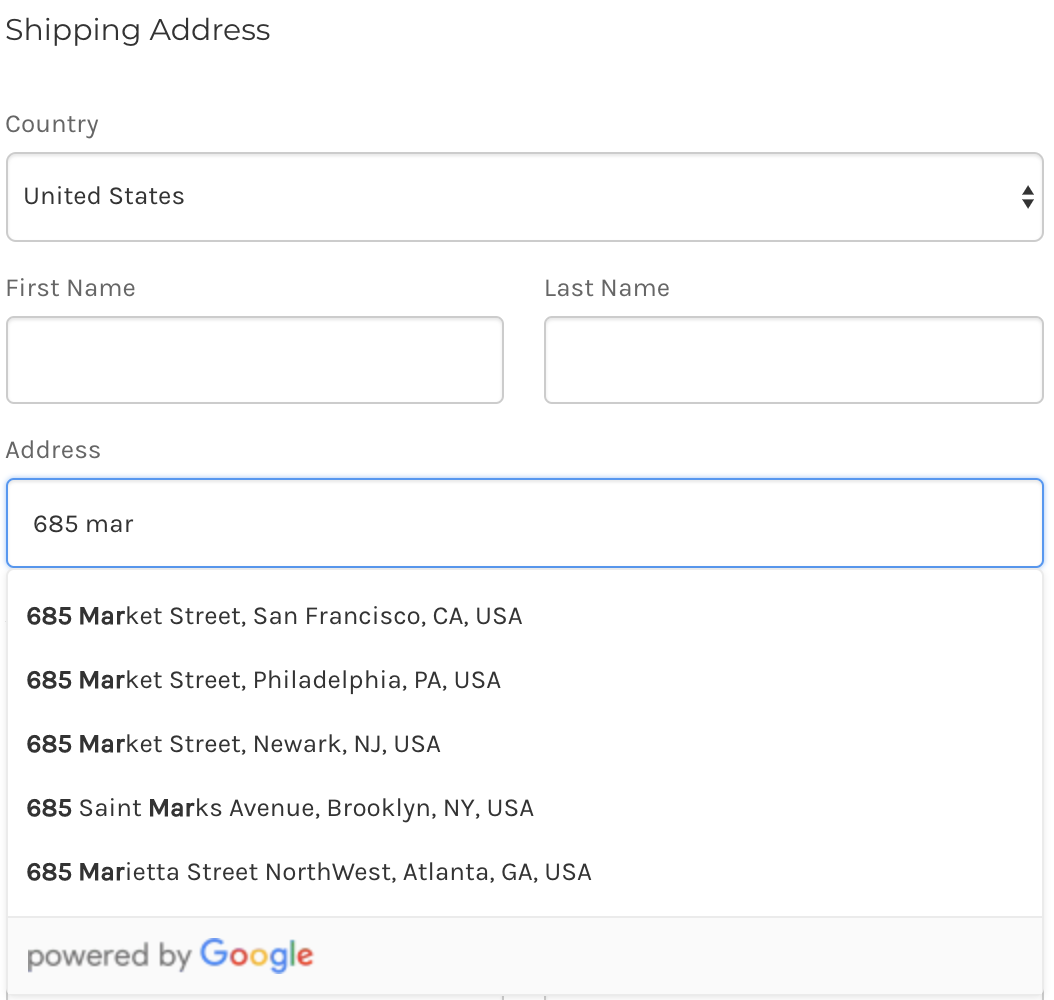
Get Ready for BCFM 2022
Black Friday and Cyber Monday are coming soon, so start preparing as soon as possible, so your eCommerce business doesn't miss out on this essential time for sales and conversions.
If you didn't start building your audiences months ago, it's okay — there are still several steps listed above that you can do between now and then.
If you need help creating a BFCM campaign strategy custom-tailored to your eCommerce business, the team at Starling Social is here to help.
You can also stay in the know with the latest digital marketing strategies by subscribing to our weekly digital marketing newsletter!
What Are Display Ads and How Do They Work?

Display ads are an effective form of digital advertising that use visuals to grab your ideal shopper’s attention and convert website visitors into paying customers. They boost brand awareness and increase sales through websites, apps, and social media.
One of the easiest ways to stay competitive in the evolving marketing is to know all of the digital marketing forms available to you.
We’ll walk you through the types of display ads, how they work, and give you examples of what they look like to set you up for success in your next campaign!
What are Display Ads?
Display advertising uses digital display ads to promote a product or service with images, text and videos. Any visual advertisement on a website counts as a display ad. These ads appear in places like the Google Display Network, Facebook, Instagram, etc.
Targeting Options
Remarketing Ads
Remarketing ads, or retargeting ads, are the most commonly used display ads because they “go after” users who have already been on your website but have left without completing the conversion goal.
These ads work by placing a section of code onto your website that collects visitors’ browsing information — like which pages they visit and the actions they take on each page. Then lists of customer types are created and categorized into what ads would appeal to them. Next, it’s your turn to create your display ads based on the categories you want to target.
Contextual Ads
Contextual ads target people who are visiting websites relevant to your product or service. For example, contextual ads might show ads for gardening tools on a greenhouse website. Where the ad is placed depends on criteria like:
- Website themes
- Keywords and topic
- Language and location settings
- Browsing history from previous people who visited the site
Google will give you an option to choose placements through topic targeting, or you can let it determine the placements for your ads.
Topic targeting
Choose a list of topics to pair your ad with similar pages on the Display Network or YouTube. You also have the option to exclude topics.
Site placement ads
Site placement ads are where you choose the website you want your display ads to run. You have options to choose to have your ad seen on the entire site, or individual pages of the site.
With a combination of site placement and contextual ads, you can choose a site and allow Google to pick the most relevant pages for your ad.
Personalized Ads
Personalized ads show consumers product or service suggestions based on their recent engagements with your website. These ads target users by demographics and interests from their browsing history.
Google has four types of personalized ads.
Affinity Targeting
This is when ads are displayed to a large audience that is currently interested in your market. Think broad topics like “pet lovers” or “foodies.”
Custom Affinity Groups
These custom groups allow you to get more specific about the people you want to target in affinity groups. With topics like “corgi breeders” or “pizza enthusiasts” you reach a narrower, more targeted audience.
Custom Intent and In-Market Ads
These ads reach a smaller but more motivated audience. Custom intent and in-market ads target people who are actively looking for products or services like yours.
Similar Audience Ads
You can think of this as a “lookalike audience.” These ads target people with similar interests to the people already visiting your website. Google will look at your retargeting list and finds similarities to target your ads to.
Types of Display Ads
Marketing experts estimate that people see up to 10,000 ads per day. Display ads need quality visuals to draw potential customers’ attention. Below are four different options to try when setting up your next display ad campaign.
Banner Ads
As you probably figured out, banner ads are the banner-like ads at the top or bottom of a website. They are simply hyperlinked images.
Rich Media
Rich media ads have interactive elements like video, audio and clickable points to make the ad more engaging.
Video Ads
This one is pretty self-explanatory. Video ads on platforms like YouTube and Instagram attract a lot of attention and engagement.
Interstitial Ads
Interstitial Ads show up as a separate webpage before you are directed to the original page you were trying to reach. These capture your attention because they take up the entire screen.
Display Ad Sizes
We stay on top of the top-performing ad sizes so you don’t have to. Include both text and image ads for desktop and mobile to get the most impressions and conversions on your ad campaign.
Here are the most popular Google display ad sizes:
- 250x250 - Square
- 200x200 - Small square
- 468x60 - Banner
- 428x90 - Letterboard banner
- 300x250 - Incline rectangle
- 336x280- Large rectangle
- 120x600 - Skyscraper
- 160x600 - Wide skyscraper
- 300x600 - Large skyscraper
- 970x90 - Large letterboard
Display Ads We Love
Spotify’s ads are instantly recognizable, have a clear call to action, and this one recognizes users’ pain point: listening to ads.
MailChimp’s ad is super shareable, catches attention right away, and they are actually pretty funny.
Disney+’s ad lets it's pictures do the talking. Even if you haven’t seen these movies, you know who these characters are. Offering a free trial to the best stories in the world — that’s some great copywriting!
Why You Should Try Display Ads
Display ads are a great way to get clicks, conversions and build brand awareness. With a variety of formats available, you can showcase your offer in different ways and find what works best for you.
The Google Display Network offers access to millions of websites across the globe. You’ll have the best success when you target the right user at the right time, and on the right website — which is why remarketing is your friend.
We believe that paid digital advertising is one of the best investments your business can make. With over 20 years of running ad campaigns, you can count on us for help with:
- Google and Bing (Microsoft) search ads
- Google and Bing (Microsoft) display ads
- Facebook and Instagram ads
- LinkedIn ads
- Twitter ads
- Pinterest ads
Get in touch with us here for a free quote and let’s see how we can grow your business together!
How to Test (and Improve!) Your Instagram Ad Conversions
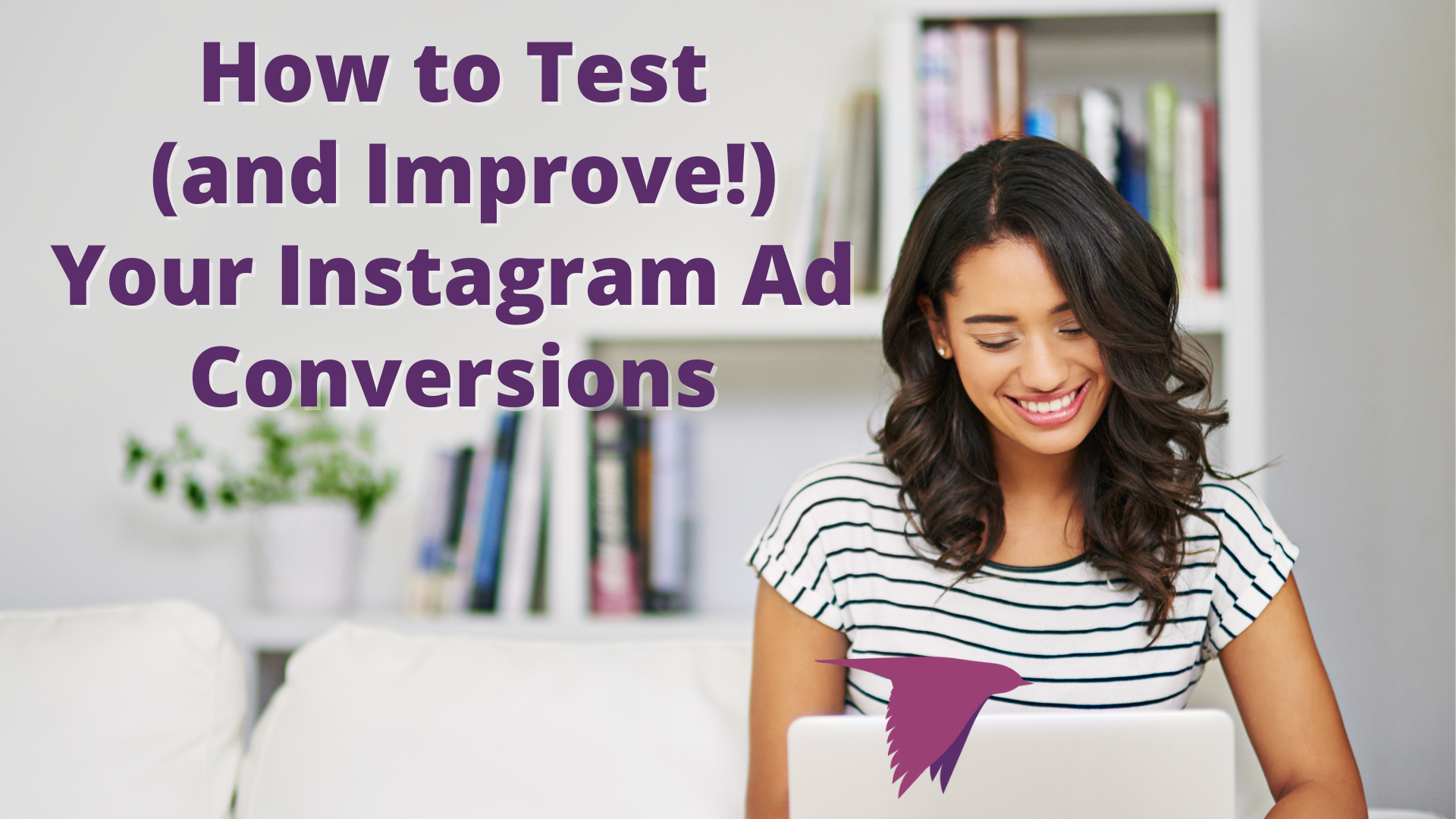
If you’ve built up a following, produce quality content, and use strategic hashtags, it’s likely that your Instagram posts are getting a decent organic reach.
The main disadvantage people have with organic Instagram posts is that the app always has done a great job of keeping content in-app. This means that people have to be really interested in your product to stop scrolling and check out the link in your bio to find out more about your product or service.
Social media apps, Instagram included, are making it harder to scale your growth without investing in ads. Luckily, you don’t need a huge budget to reach a lot of people outside your existing audience.
Since the goal of Instagram ads are to get people to leave the app, this not only requires a strong copy, image and call to action; but you also have to target your ads so the right people see them and put their scrolling to a stop to visit your page.
Here are the three key elements to test the effectiveness of your campaign:
- Objective
- Messaging
- Audience targeting
It’s important to only test one factor at a time to get a clear idea of what works and what doesn’t.
Choose the Right Objective
When you choose an ad objective, it tells Instagram (through Ads Manager) what action you want people to take on your ad. The campaign objective will determine the results you are trying to achieve.
Your objective choices are:
- Awareness
- Traffic
- Engagement
- Leads
- App Promotion
- Sales
An awareness objective will show your ad to people who are most likely to remember them.
A traffic objective will send people to a destination like a website, app, or Facebook event.
An engagement objective will get more messages, video views, post engagement, Page likes or event responses.
A leads objective will collect leads for your business or brand.
An app promotion will find new people to install your app and continue using it.
A sales objective will find people likely to purchase your product or service.
Facebook/Instagram/Meta… whatever you want to call it, will determine who your ad is shown to, and where and when they see it.
Instagram knows that on your bus route to work you might have some extra time to make a purchase, but when you’re on the app mid-weekday for a little break, you probably aren’t doing serious shopping.
If you choose the wrong objective you will miss out on conversions and get a poor return on your investment.
If you want to drive people to your website to buy a product, choose the sales objective. If you’re looking to show off your new store location, then an awareness campaign would be your best bet.
Send the Right Message
Instagram ads give us a few places to test your messaging:
- On your photo or video
- Primary text
- Call to action
Test images with and without text. Try using a mix of urgent calls to action with a mix of inviting and welcoming ones. Ex. “Limited stock available! Get yours before they sell out,” or “Your new favourite XYZ is waiting for you.”
For example, we like to try options that include the price and options that don’t. Another great tip is using keywords that your audience immediately recognizes and connects with. For example, a boutique owner would be attracted to words like wholesale, buy direct, or retail buyers.
Although we aren’t thrilled with the constant changes Facebook and Instagram keep throwing at us, updating Ads Manager to give us more text options was a great move!
You can even customize your copy and graphics for each placement.
Pro Tip: Use this feature to customize your ads for the best practices of each placement and to make sure your ad will run with the right size in the right spot.
It’s best to use different aspect ratios for different placements. That way, your image or video covers the whole mobile screen and grabs peoples' attention.
The different text option is a great way to maximize your return on investment. You have 5 chances to grab attention and Ads Manager will use optimized text for each placement. For example, Instagram Stories work well with short copy.
Use the Right Call to Action
You have 12 choices when choosing a call to action (CTA) button:
- Learn more
- Apply now
- Book now
- Contact us
- Donate now
- Get quote
- Order now
- Get access
- Shop now
- Sign up
- Subscribe
- Send WhatsApp message
That’s a lot of choices. Typically, you want your CTA to match the action you are trying to get people to take. However, that could still leave you with several options, and there are some exceptions. For example, a client of ours set up an ad campaign to get donations for their organization. We decided that it was best to choose the “Learn more” button instead of the “Donate now” button for two reasons:
- When you choose “donate now” an automatic text appears under it saying “not affiliated with Meta.” This option took away our chance to add a link description, and they wanted to provide as much information as possible.
- The “Learn more” button is the most widely used CTA for Facebook and Instagram ads.
This is another important feature to test in your ad campaigns. Do people want to press Subscribe vs. Sign Up? Or will you get even better results with “Learn more”?
Choose the Right Audience
Make multiple audiences so you can test which ones work! Ads Manager’s A/B testing lets you run Instagram ads targeted to two different audiences (or whatever else you choose to test) and gives you clean data sets.
There are a few different options for targeting your audience including:
- Retargeting vs new data
- Individual interests
- Interest categories
- Lookalike audiences - post engagement lookalike, website traffic lookalike, purchase lookalike
Each time you test a new audience/message/objective it will become clear what works for your brand and what doesn’t.
How to Test With A/B Testing
A/B testing is an unreal feature to find out which message/objective/audience gives you the highest return.
Create different versions of the same ad that has one different element to test. Simply toggle the Create A/B Test option over and once you create your first ad Instagram will ask you to create a second ad with whatever options you want to test.
As you become more confident you can feel better about increasing your ad spend — but not by more than 20% at a time or Ads Manager will have to “learn” all over again.
Make sure you keep detailed reports of your ads so you can easily compare which ads perform best. It will make creating future ads much easier and gives you a better chance of success.
If you loved this information but feel like your time is better spent running your business, contact us today and we’ll handle all your ad planning, scheduling and reporting for you!
How to Write Newsletters People Want to Read
- by Alyson Shane
This post was guest written by Rose Regier.
If you’ve been around here for a while, you already know that “We’ll just post on Instagram” isn’t a marketing strategy.
If you’re new to these parts and you beg to differ, let us bring you up to speed:
While social media probably should be a huge part of your marketing mix, it’s not everything. Social media is like playing to a crowd at a music festival where hula hoops, kettle corn, and hand-made jewelry are competing with you for your audience’s attention.
Email marketing, on the other hand, is like inviting someone from that crowd to your house to jam.
Now you have them on your front porch, ready to hear the acoustic versions of your songs, and they’ll probably stay and chat after. And there’s the beauty of email - it’s consent-based, it’s personal, and it’s free!
Signing Up for The Goods
Before we talk about the newsletter, let’s talk about the opt-in process.
It’s a good idea to have a marketing strategy for promoting your newsletter. Use your social platforms to tell people why they should sign up, and make it easy for them to do so by linking to an opt-in page and featuring your sign-up box prominently on your website.
Consider giving something away for free when people sign up - this could be a product discount or a free guide to get them interested in your offerings.
This may not be right for everyone though, depending on your business. A lot of people sign up for emails just to get the freebie and then unsubscribe once they get it.
The Welcome Email
Once they’ve signed up, you have one golden opportunity to start the relationship off on the right foot - the welcome email. Welcome emails have 4x the open rate and 10x the clicks as any other type of email.
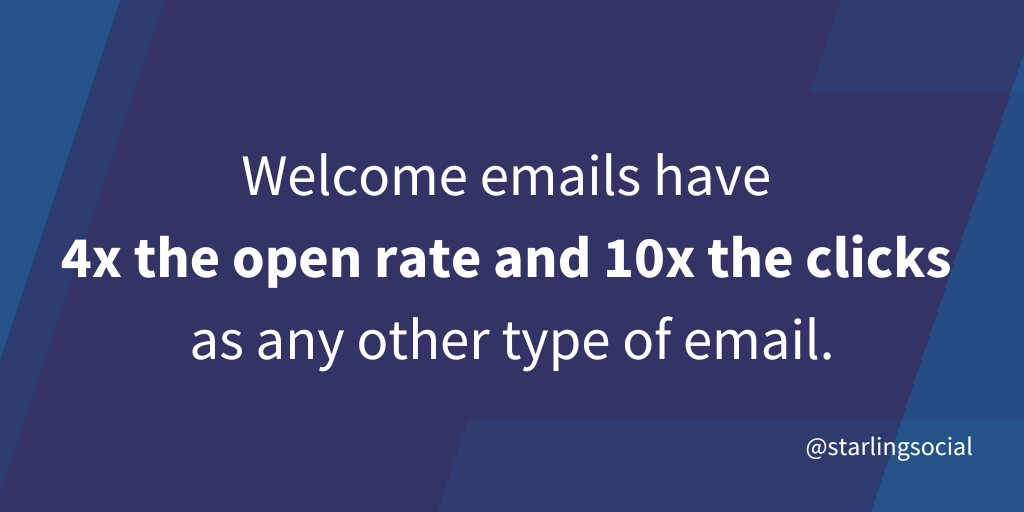
Here’s where you deliver your freebie or a discount code if you’re doing that, and also where you set expectations by letting folks know how often they’ll hear from you and what type of content they can expect. Once you’ve told them what to expect, you’d better follow through. Consistency is an important part of building trust with your potential customers.
The Subject Line
What makes people want to open an email in their inbox? Take a look through your own inbox and make note of which promotional emails you’ve opened recently and consider why.
Subject lines personalized to your customers’ interests are the most likely be opened. In fact, this matters more than discounts or time sensitive offers.
Every email you send deserves a unique subject line. “Weekly email” or “Newsletter #27” won’t cut it. Let folks know what’s in this specific email and why they should read it.
Subject lines should be short (less than 10 words), use emojis if appropriate, and contain a hook that gets people curious. Verbs are your friends! Consider using your customer’s name in the subject line to take your personalization up a notch.
Make sure what you’re promising in your subject line is delivered in the email.
Here are some subject lines we love:
- Rock the colour of the year (Etsy)
- Must-have tees from $15 (Everlane)
- How to live at home 24/7 (Feather)
- Where to drink beer right now (Eater Boston)
- 3 rules for marketing during a crisis (Digital Marketer)
The Pre-Header
An email pre-header is the text that follows your subject line, and it’s another opportunity to create interest in opening your email.
Your subject line and pre-header should work together to capture your customers’ curiosity.
Different email providers have different limits on the number of characters, so keep it short and snappy - somewhere between 30 and 80 characters. You can use this space to ask a question, offer an incentive, include a call to action, or to summarize your email.
The Goods
Let’s get into the content of your newsletter. What you write depends on your business and what your customers find valuable. Remember to think about what’s in it for your customer when they open your newsletter. Be energetic in your copy, and use humour if appropriate.
Your newsletter could focus on industry news, products, company updates, testimonials, or blog posts. You can include a mix of all of these, but choose one type of content as your feature.
Start somewhere, and then measure. After a few months, the data will tell you what content is working and what you can ditch.
If you have more than one type of customer, segmenting your email list and sending more personalized content is a good idea.
The Best Time to Send
Recognizing the sender and having time to open an email are the two biggest factors that affect whether people will open your email or not. Given that they’ve subscribed, you can check off the first one.
Figuring out the best day and time to send your email newsletter will require some testing, but some recommendations on a starting place are to send your email:
- On weekdays - Tuesday, Wednesday, or Thursday tend to perform better than Mondays and Fridays
- During the day - test a few different times of day to find out what works best for your audience
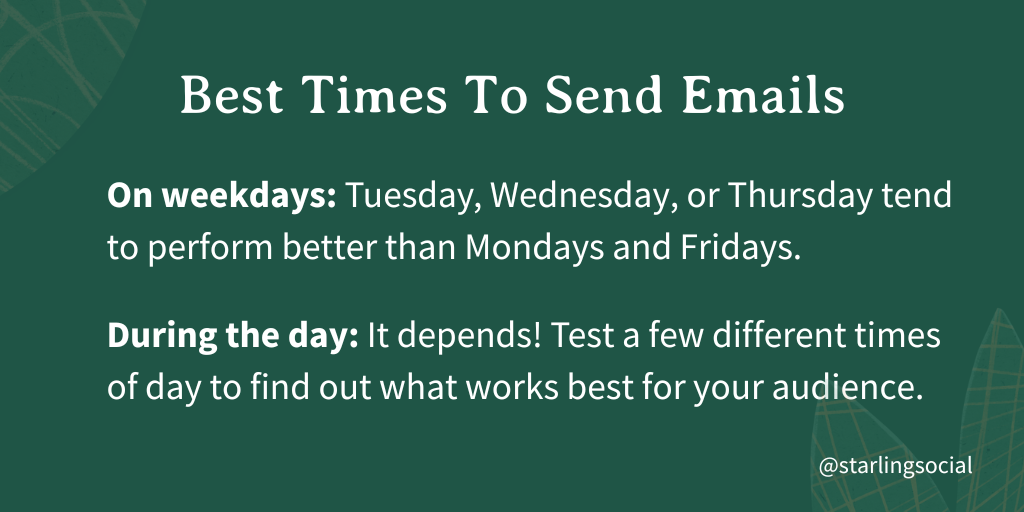
The Format
The average time spent looking at an email newsletter is 10 seconds, so make it easy to skim by using white space and separating copy into bite-sized chunks. Put the most important information at the top, and use descriptive headers to separate content sections.
Remember that more than half of your subscribers are likely opening your email on their mobile device, so keep this in mind when you’re designing your newsletter. Send test emails and open them on your desktop and phone to make sure the format works for both.
Length
Aim for an average of 20 lines of text, or around 200 words. Any longer than that and you’re probably wasting time on content that won’t get read.
Images
Including images makes your newsletter more visually appealing, but remember that images can also slow down load time which can hurt your open rates.
Start with high resolution images and scale them down to keep them crisp. Optimal image size will depend a bit on which program you use to draft your newsletter. In general, keep file sizes less than 1 mb. Image types can be PNG, GIF, or JPEG. Header images should be 600 pixels wide.
Be sure to include alt text with your image for accessibility.
If you need more help writing newsletters that your customers want to read, we’ve got you!
What's an Entity First SEO Strategy and How to Build One?
“Entity search” “might just be one of the most important SEO tactics you’ve never heard of!
This (somewhat) obscure term has become something we’ve been focusing on here at Starling Social since Google updated its topics application program interface (API) back in June of this year.
This update to Google’s most comprehensive and powerful deep learning algorithms means that marketers and businesses need to be thinking more deeply about semantic search than ever before.
If you’re new to terms like “semantic search” and “entity SEO” don’t worry! Today we’re going to dig into what these two terms mean, and how you can leverage them to help customers find your business.
What’s Semantic Search?
Semantic search describes a search engine’s efforts to generate the most accurate results on the search engine results page (SERP) by using algorithms to understand search intent, query context, and the relationship between the words being used.
Or to put it another way: semantic search is a search engine’s attempts to understand natural language the way a person would.
What is Entity Search?
Back in the day, a search was performed almost exclusively by typing words (keywords) into a search engine, but now 40 - 50% of all searches are conversational, meaning that they’re done through smartphones, Alexa, Google Home, etc.
This change is why search engines have put so much energy into understanding the context and intent behind a search query. As a result, search has evolved from keywords, to “entities”.
“Entities” are expressions that a search engine can understand without ambiguity, regardless of the language being used. This can include:
- A person’s name
- A numerical expression
- A place
- An object
- An event
- A concept
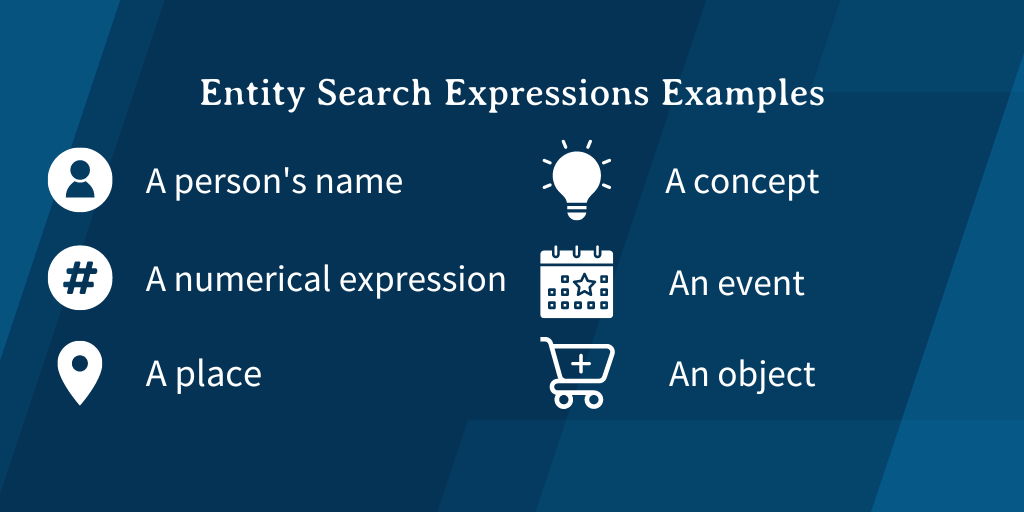
Let’s look at an example: the search query “what’s the cheapest price for an AirBnB in Toronto?”
Here’s how a search engine would understand the query:
- What: A concept (question qualifier)
- Cheapest: A numerical expression (lowest cost)
- Price: Numerical expression
- AirBnB: Organization
- Toronto: Location
By connecting these entities, search engines can understand both the search query, as well as the intent behind it.
Once these areas are understood, a search engine will try to find the most relevant information about the “entities” in the query by scanning content on the web and using AI to sort and present it to the user. This is called “entity/semantic search”.
The Difference Between Entity SEO and Traditional SEO
In traditional SEO, web pages are ranked on “scores” based on relevance, authority, and the number of backlinks from other websites.
Entity SEO focuses on showing the most useful information based on entities, facts associated with those entities and questions related to them.
What
The topic of the search query and what a user expects to find when they search for that topic. This sounds similar to traditional SEO and keywords, but semantic search takes a different approach.
Let’s think back to the example above: how many ways could someone ask the same question? Would it be asked differently in other languages?
Making sure your content is as comprehensive as possible and offers credible information about the topic, and covering as many related topics as possible, is how you can optimize your content for entity SEO.
Why
This describes the intent behind the search. What is the person looking to find out?
Are they considering and comparing options?
Are they looking for directions?
To make a decision?
To complete a transaction?
Using a combination of “what” and “why” will allow you to create content that’s SEO friendly and caters to your customers at every stage of their buying journey, so creating content around these topics and interconnecting them can help your page show up on a SERP more often.
How
Nowadays, how a search was performed is almost as important as what’s being searched for, so consider how your audience might want to consume the information they’re hoping to find.
Video, images, bulleted lists, hours of operation, FAQs and question and answer sections, and more are all excellent ways to create entity SEO-friendly content for your site.
The Four Outcomes Your Content Should Accomplish
The five outcomes you want to accomplish are:
1. Discoverability. Make sure your content is “discoverable” by search engines and by customers at different stages of their buyer’s journey.
2. Relevancy. Your content needs to meet your searcher’s needs and have as much info as possible.
3. User-friendly. Your content needs to be easy to read and understand.
4. Engaging. Engaging content encourages readers to take the desired goal (learn something, sign up, fill out a form, etc.)
Creating content that’s relevant, topical, and increases “discoverability” means keeping these elements in mind:
- The content should be personalized. Readers should feel like it was written for them, specifically.
- The content must tell a story. It needs to be engaging and capture readers’ attention.
- The content should be scannable. It needs to include headers, sub-headers, and elements like bulleted lists to make skimming easier.
- It must include images. These both break up the text, make things clearer, and offer more SEO optimization opportunities.
- The content must be mobile-friendly. According to Statista, 55.79% of all web traffic in Q1 2022 came from mobile devices, so make sure your content is readable on smaller screens.
How to Align Your Content With Entity First SEO
Before we talk about how to align your content, let’s take a quick look at how search engine priorities, algorithms, needs, and results have changed over time:
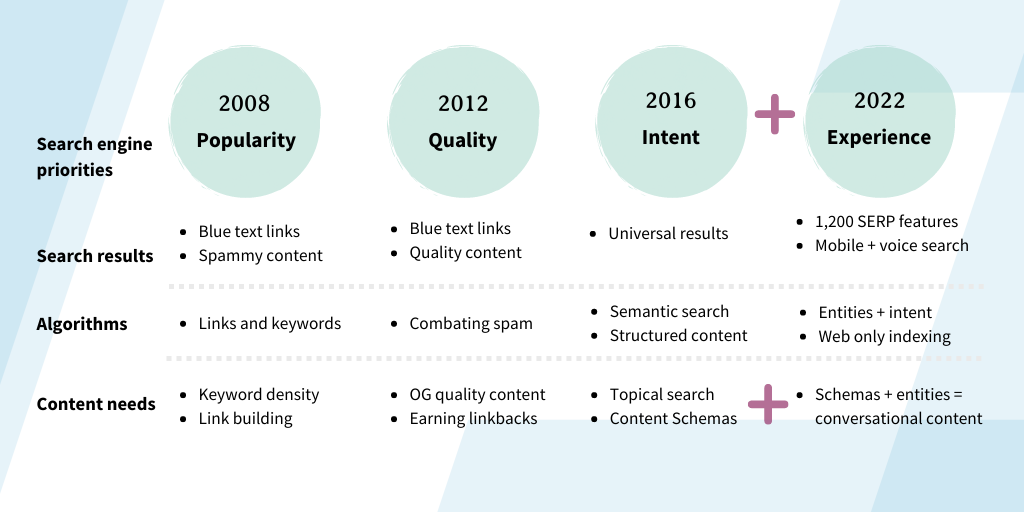
Like we said before: the way people are searching is changing, and the shift to searches performed through “screenless” devices means that the AI powering search engines is trying to replicate how humans think and speak.
If you’re wondering how you can tailor your SEO strategy to match how search engines have evolved, here’s how:
Consider Your Website Schema
This is a bit wonky, so stay with us: schema markup (also known as structured data) is the language of search engines. It was introduced by Google in 2011 as a way of helping search engines display more relevant results to users.
Web schemas are basically words or “shared vocabulary” that help refine searches and display more relevant results to the user.
Here’s an example: you and your friends want to go camping in Red Deer, Alberta… but when you try to perform a search, a bunch of results for red deer the animal come up. This is because Google didn't have context to understand that you wanted information on the city, not the animal.
So when you’re considering the content to write and the metadata to add to various pages on your site, make sure to consider the schema vocabulary to include, and the most relevant pages to include it on.
Consider the Market Opportunity for your Keywords
Use an in-depth keyword research tool (our fav is SEMRush) and do research into how different keywords in your industry are performing.
Then, map your content based on three factors:
1. Informational
2. Navigational
3. Transactional
Here’s an example of what that could look like:
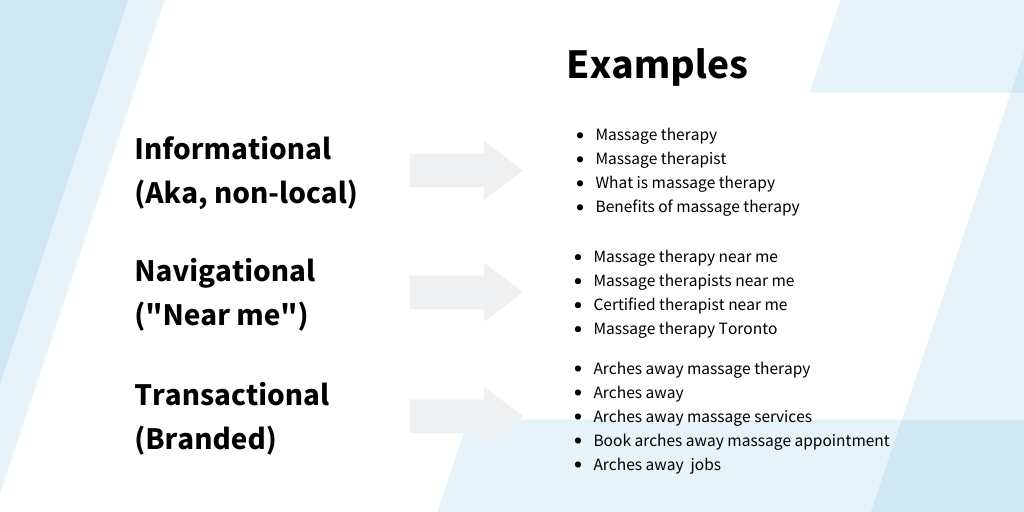
Identify Topic Gaps
Once you’ve identified your high-priority keywords and the best pages to use them on, cross-reference those findings against topics and entities covered by other high-ranking websites.
Some things to cross-reference against your own site include:
- Image alt tags (here’s two easy ways to check)
- Headings
- Lists
- Metadata (here’s how to do that)
Update Your Web Pages
Once you’ve identified what other high-ranking sites are doing, it’s time to compare against the pages on your own site and start identifying the areas where you can start adding in more content and schema-focused keywords.
Some areas you’ll want to focus on updating and optimizing include:
- Meta Keywords Attribute. A series of keywords you deem relevant to the page in question.
- Title Tag. This is the text you’ll see in the SERP and at the top of your browser. Search engines view this text as the “title” of your page.
- Meta Description Attribute. A brief description of the page.
- Meta Robots Attribute. An indication to search engine crawlers (robots or “bots”) as to what they should do with the page.
More info on these topics can be found in this handy article from WordStream.
Protip: if your site is hosted on WordPress, the Yoast SEO tool is a great plugin that can help you optimize all these elements!
Optimize Your SEO for Entity Search: Recap
SEO is more about just the content on your page (though that’s important, too) — you need to consider the page layouts, how they link to one another, design elements, entity coverage, and schema.
To make this easier for yourself, think about the main pages on your site as “spokes” in a wheel, the other relevant pages that link back to it as the “spokes” in that wheel.
To recap, if you want to optimize your site for entity first SEO, take these steps:
- Consider your website schema
- Do research on your target keywords
- Identify topics on other high-ranking sites
- Identify content gaps between those sites and your own
- Update your pages with content, headers, metadata, etc.
Staying up-to-date with the latest SEO trends is easy! Just subscribe to our weekly digital marketing newsletter for the latest articles, resources, and insights.
Our Top 7 Favourite Content Marketing Tools
We first read about the three-legged stool metaphor in Arianna Huffington’s book Thrive. In her metaphor, the three legs of the stool—money, power, and well-being—are the pillars of success, and eliminating any one of them causes your stool to topple over.
We think this metaphor works well for content marketing too. The three legs of your content marketing stool are strategy, creativity, and process.
If you have a lot of creativity and great processes but no strategy, you’re going to create some banging content on the regular, but it’ll fail to to drive the results you’re looking for.
If you have strategy and processes down but no creativity, you’ll be efficiently pumping out some very bland and derivative content that has an objective, but doesn’t keep people interested.
And finally, if you’re creative and strategic but you can’t get your s*** together, all those great ideas will just live in your head or on a post-it somewhere without getting to the people who you’re trying to reach.
Lucky for you, you don’t have to be naturally proficient in all three areas to be successful. There are tools and resources to help you, and if you use them consistently your content marketing stool will be topple-proof.
A Note on Order of Operations
Strategic planning comes before process and creativity. Without strategy, you’re shooting your arrows into the sky. Strategy ensures you know what you’re trying to achieve, who you’re trying to reach, and how you’re going to get where you want to go.
Unfortunately there’s no magic tool that will hand over a strategy, that’s work you just have to sit down and bang through. As you’ll see though, tools come in very handy when it comes to the measurement part of your strategy.
Google “Content Marketing Tools” (Actually, Don’t)
A quick Google search will tell you there are way too many tools out there to choose from, and if you’re like us, this type of research can quickly turn into a rabbit hole of procrastination.
Let us save you some time so you can get back to business. Here’s a look at our favourite tools that we use daily at Starling Social, and which legs of the stool each supports.
1. Trello (Process)
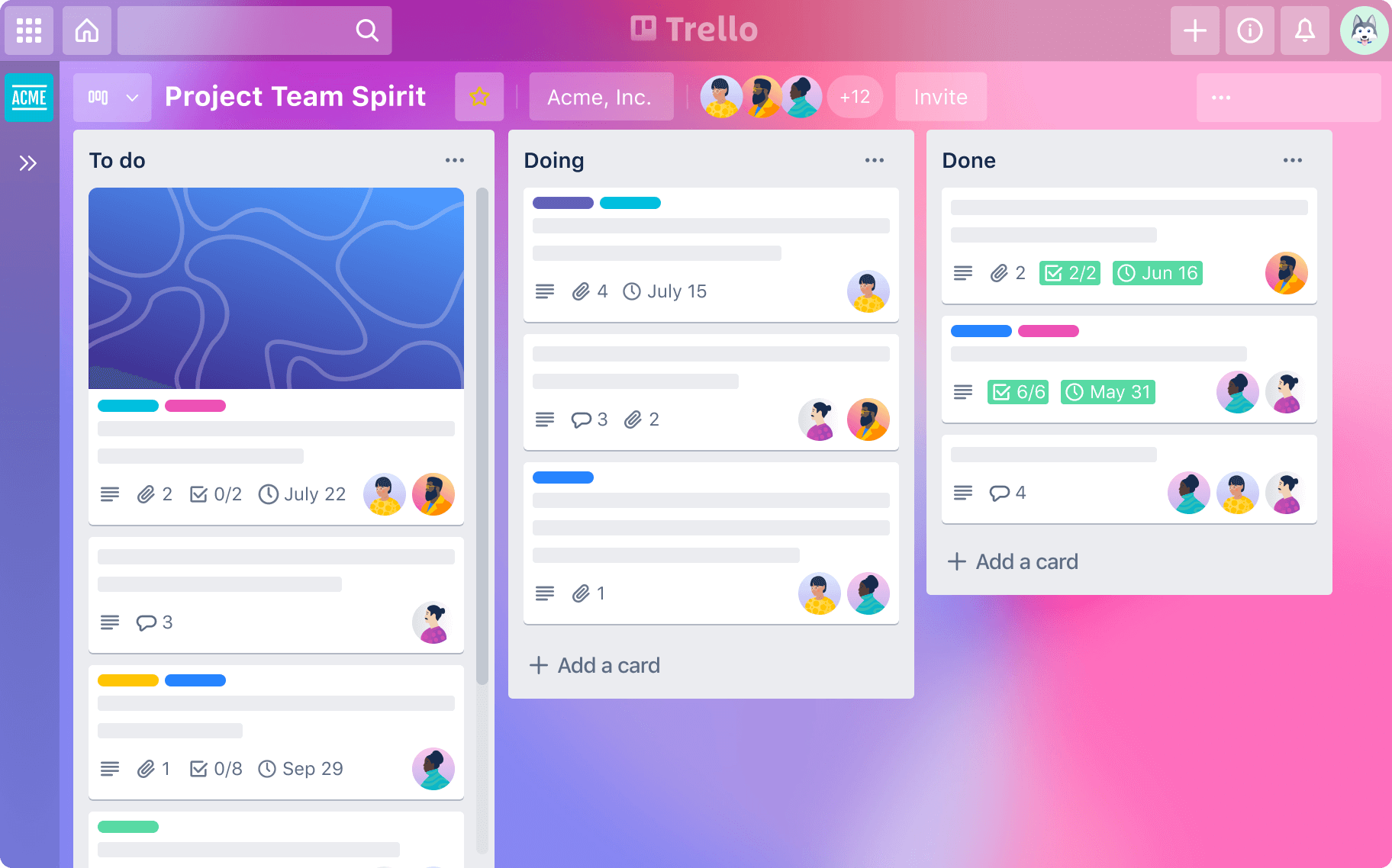
Image via Trello
Trello is the foundation of our processes. This kanban-style project management tool is visual, it’s collaborative, and it keeps us on track.
Here are some ways Trello supports our processes:
- Collaborate internally and with clients
- Assign tasks
- Add due dates
- Keep track of upcoming events
- See what’s in progress, in review, or done
- Link to templates, planning documents, spreadsheets
There are countless ways to use Trello, and a quick search will help you find templates to get you going with minimal effort. Click here to dive deeper and see exactly how we use Trello in our business.
2. Sendible (Strategy)
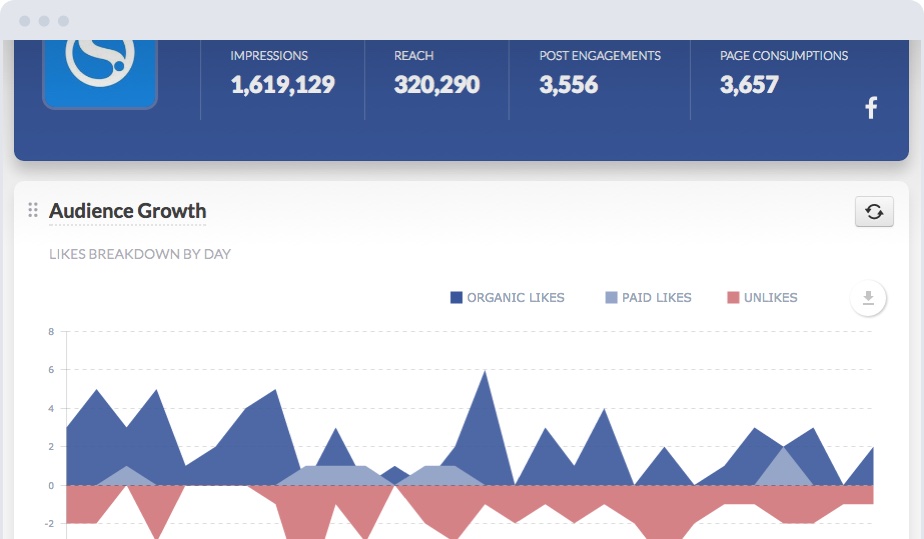
Image via Sendible
A key part of your digital marketing strategy is measurement. If you don’t take the time to measure results, you don’t know if what you’re doing is working. Measurement also tells you where to focus your efforts and allows you to refine your strategy as you go.
Going into each social platform to pull out data is mega time-consuming, so having a tool that collects all that data in one place is key. We use Sendible to collect and analyze data for our clients so we can create handwritten reports with recommendations every month.
Here’s why we like it:
- It not only presents data, it gives insights that are actually meaningful rather than just showing generic charts that don’t paint a true picture of how things are going. For example
- "Twitter was your most engaged platform last month, with a 22.4% increase"
- It's affordable. We’ve looked at many analytics tools, and this one does more for less.
- The Reports hub is clear and useful. Mentions are clearly broken down by source with the number of mentions and the corresponding percentage. You can see overall sentiment based on positive, neutral, and negative mentions. It’s a great interface for finding trends and measuring mentions against competitors.
- You can access Google Analytics within Sendible, which is very convenient for tracking how effective your social campaigns are driving traffic to your website.
3. Feedly (Creativity)
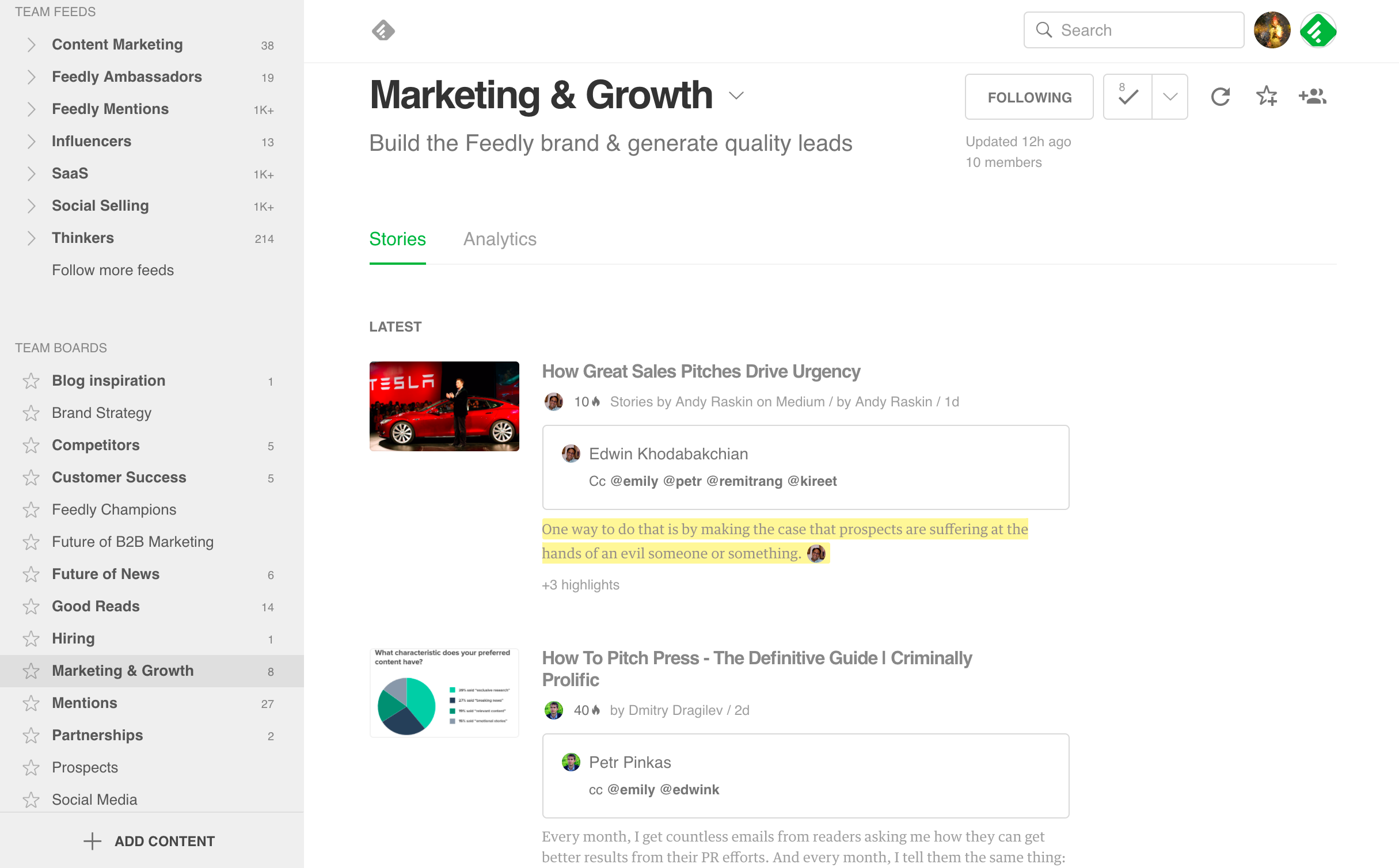
Image via Feedly
Creativity doesn’t happen in a vacuum. Even the most creative types get inspiration from others. Seeing what people are talking about as it relates to your business can inspire you, and also keeps you relevant. Seeking out news and finding inspiration can take a lot of time, and that’s where Feedly comes in.
You tell Feedly what’s important to you, and it uses AI to flag content that you might find useful. We use Feedly to track marketing trends, and to curate content for our weekly newsletter.
4. Buffer (Process)
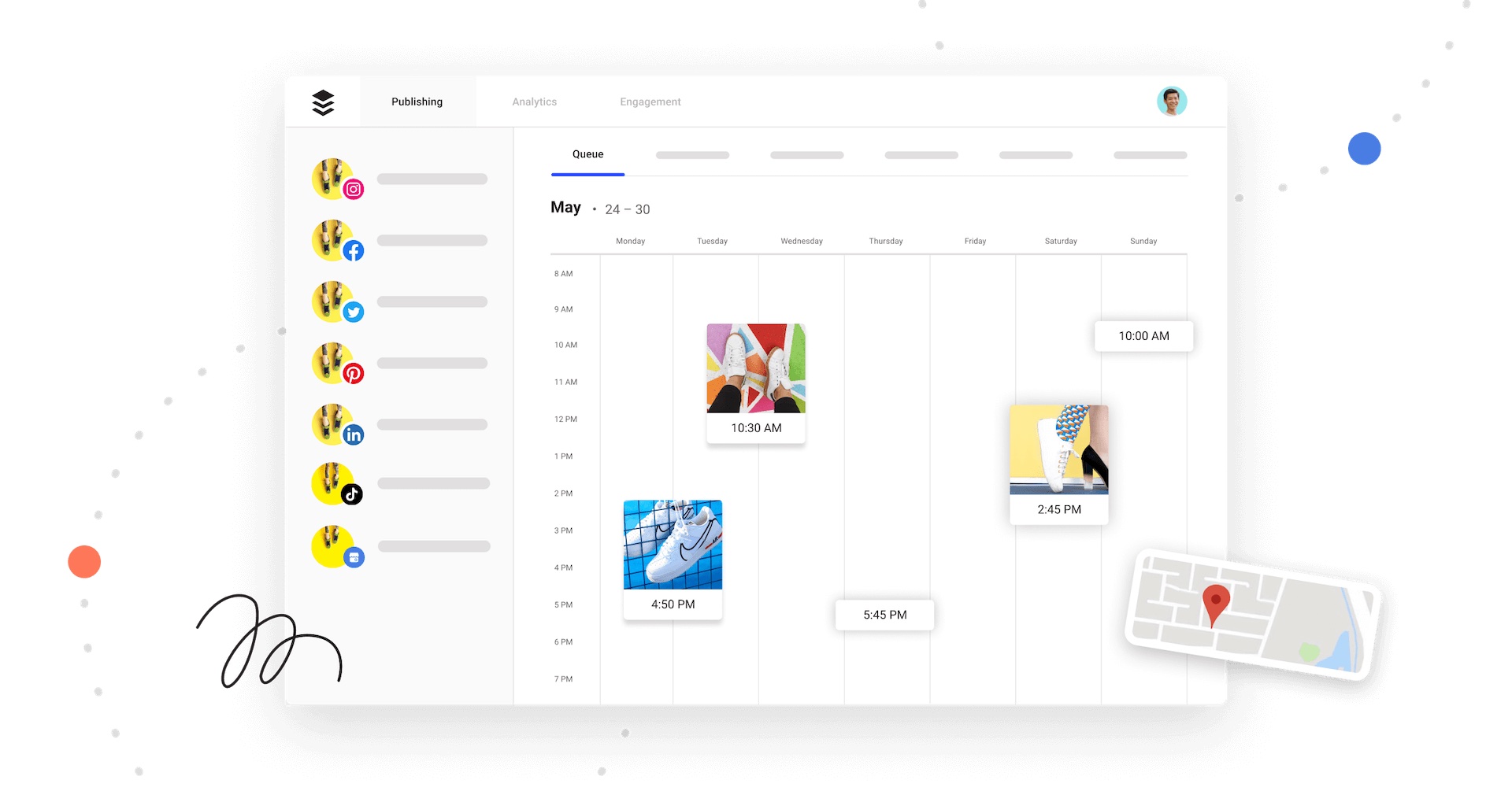
Image via Buffer
Buffer is a scheduling app that works with all major social platforms. For maximum efficiency, we recommend scheduling posts up to a month ahead of time and reviewing weekly to make sure what’s in the queue is relevant based on current events.
The dashboard is super user-friendly and the calendar function allows you to see all your planned posts at a glance to make sure there are no gaps in your posting schedule.
We find the draft posts function especially useful, because it allows other team members to jump in and review before content is officially added to the queue.
5. Google Drive (Process)
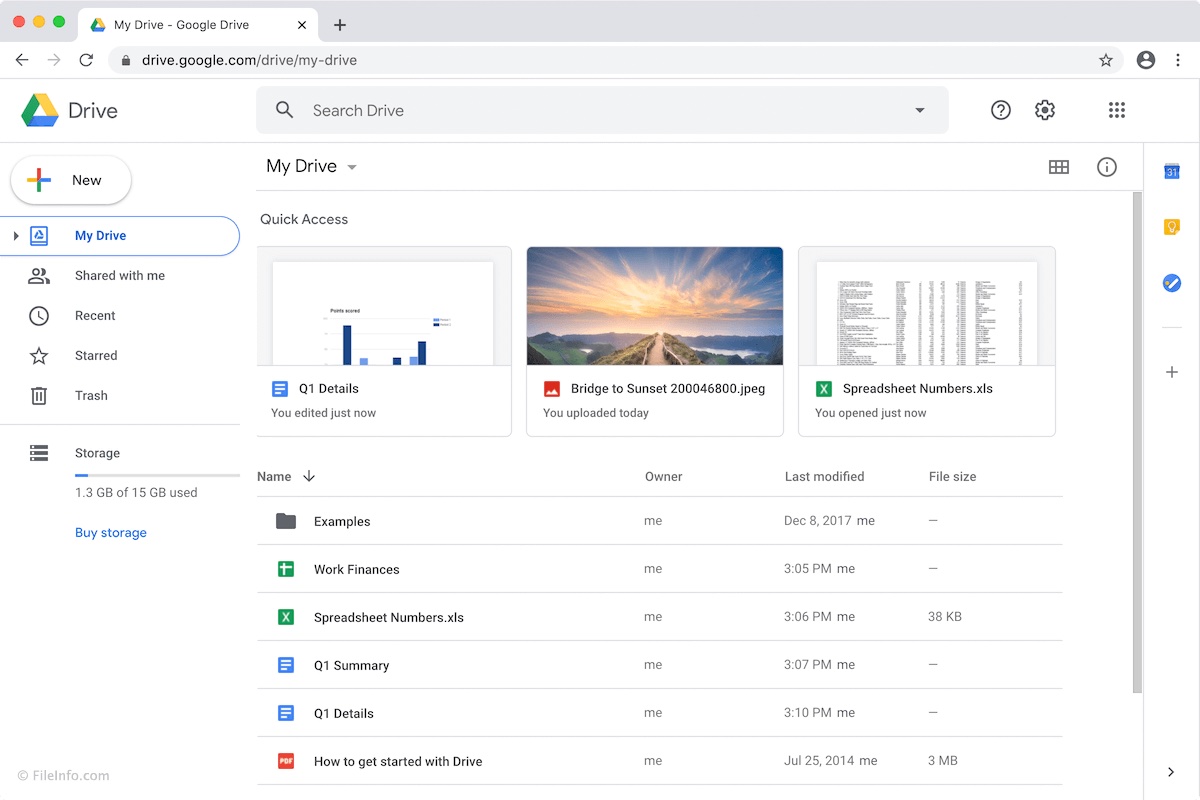
Image via FileInfo
Google Drive is our go-to for documents and spreadsheets. It’s cloud-based, so any number of people can collaborate on the same document at the same time. We use Google Docs for meeting notes, marketing plans, and for drafting blog posts and social content. Google Sheets allows us to create spreadsheets for customer personas and content calendars.
Why choose Google Drive over Microsoft OneDrive? It comes down to personal preference. They both offer real-time collaboration, offline access, and syncing across all your devices. The major difference is how you access them on a desktop computer: Google Drive is browser-based, and OneDrive is an app you download. Die-hard Microsoft Office users will likely find the familiarity of OneDrive preferable.
6. Canva (Creativity)
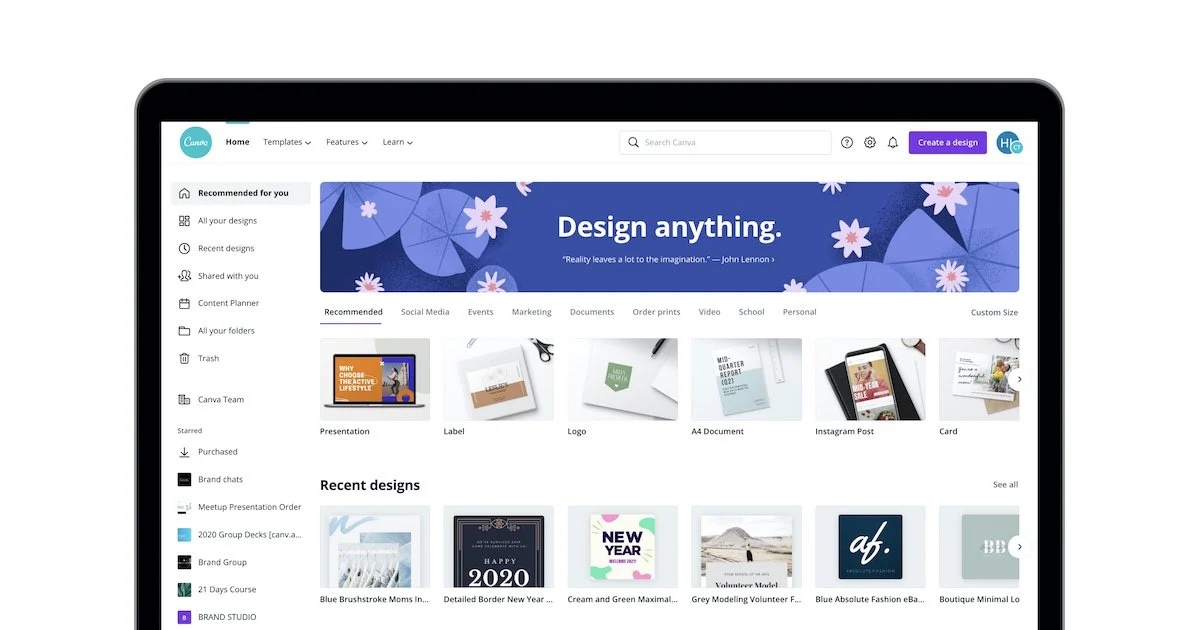
Image via Canva
Canva is a design-light tool for people who want to make eye-catching graphics but don’t have the time/desire/skills to start from scratch in a program like Adobe Illustrator.
Forget trying to find the right image size for different social platforms, because Canva has the optimal sizes pre-loaded in their templates. You can start with a blank canvas or use one of their thousands of templates to get started and then customize it.
We also use Canva to search for stock images, though this feature works best if you have a Pro account, which gives you access to 90 million stock photos.
Hot tip: you can filter your image search by colour to find photos that work with your brand colours.
7. LinkTree (Process)
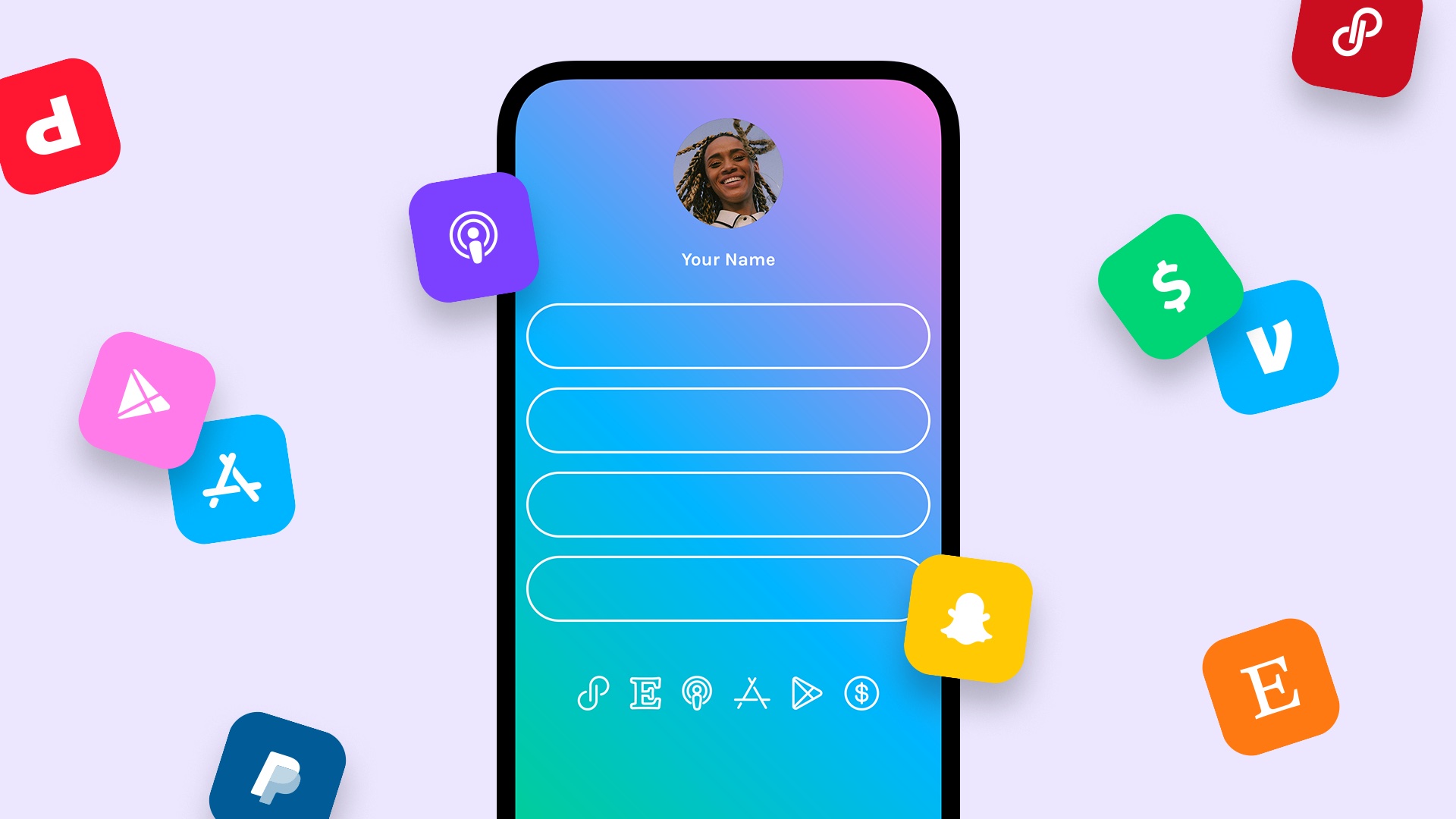
Image via LinkTree
Do you see people including links in their Instagram captions? Don’t do it! They aren’t clickable. They’re not even copy-pasteable, unless you’re scrolling on a browser, which is not how most people use Instagram.
Create a smooth user experience by directing people to your Instagram bio where you can use a linking tool like LinkTree to send people to the specific content they’re looking for.
You can customize the colours to match your brand, and unlike many other Instagram linking tools, this one is free! According to LinkTree, the optimal number of links is 3-7. Any more than that and you can overwhelm your customer.
Improve Your Content Marketing Today
There you have it folks. Happy stool-building! If you’re feeling overwhelmed, we’re here to help you get your content marketing stool into tip-top shape.
The Top 5 Link in Bio Services for Social Media
One of the biggest challenges to converting your social media followers into customers is directing them to your website. This is why you may have noticed people using the expression “link in bio” on platforms like Instagram.
Today we’re going to talk about what the phrase means, how you can use it to direct more traffic to your website, and some tools to help make that easier.
What Does “Link in Bio” Mean?
The phrase originated on Instagram back when the platform only allowed users to add urls in their (you guessed it) bios.
As a result, people started saying “link in bio” in their Instagram captions to let readers know where they could go to buy something, read a blog post, or contact them.
Some companies also use the #LinkInBio hashtag to reinforce the message - here’s an example:
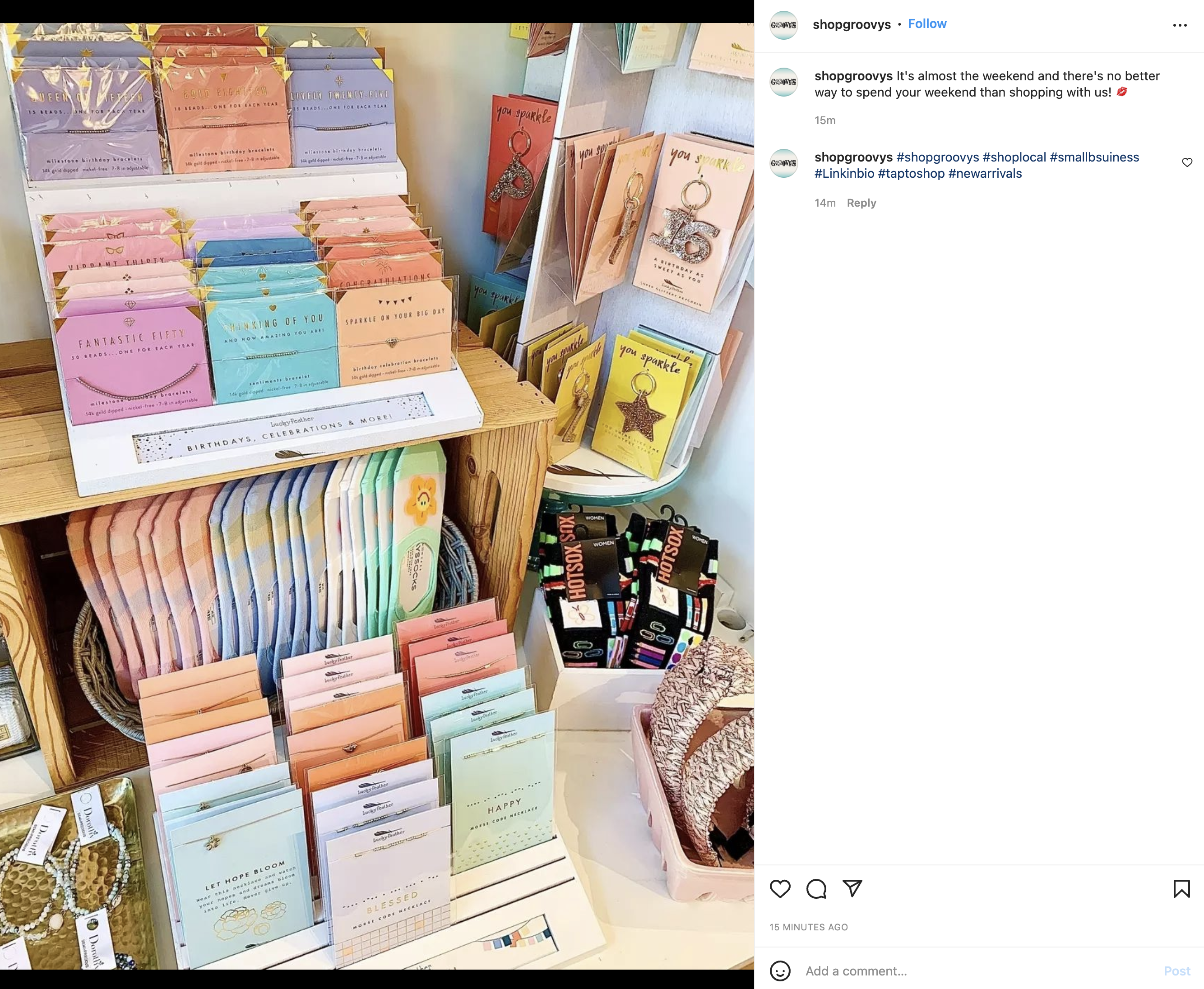
Nowadays Instagram allows users to add links in a few places, like as a Stories sticker or through Instagram Shopping tags, but the “link in bio” feature is still one of the most powerful and popular ways to direct users to your site.
It’s not just for Instagram, either: “link in bio” is popular on TikTok, Twitter, and even YouTube as well.
What’s the Benefit of a Link In Bio Tool?
The reason a link in bio tool matters for your business is because it doesn't just direct people to your website — it also allows you to create a custom landing page within the app that directs people to multiple urls.
Here’s what a link in bio tool looks like on our Instagram profile:

This one link directs our audiences to a landing page with a bunch of different links to our latest blog posts, calls-to-action to book an audit, sign up for our newsletter, and get in touch:
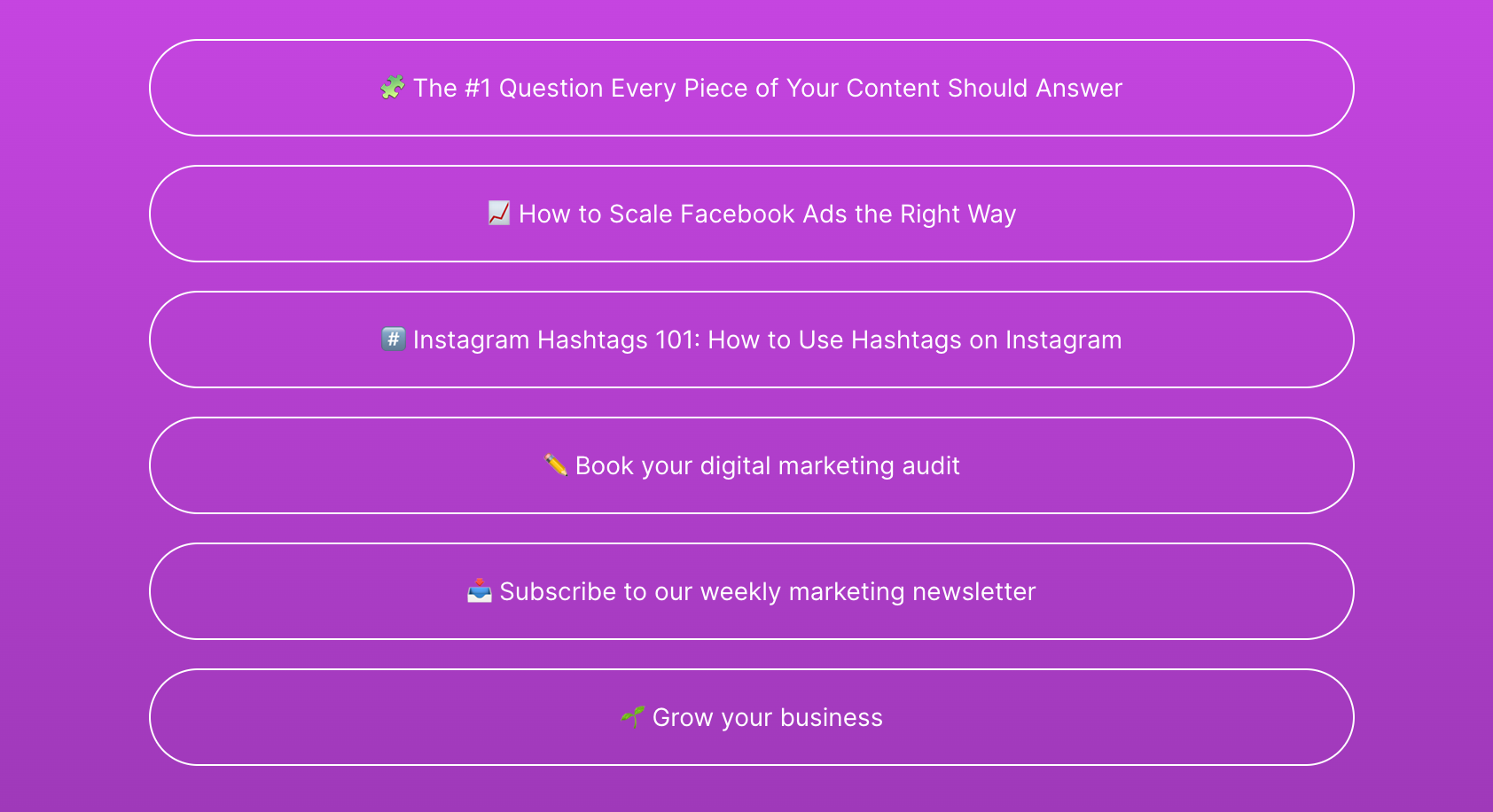
As you can see, a link in bio tool doesn’t just send people to your website, it allows you to strategically showcase high-priority links to your target audience and make it easy for them to click.
That being said, not all link in bio tools are created equally! Some offer simple interfaces, while others create mini-sites within the social platform for users to browse.
With literally dozens of options to choose from it can feel overwhelming to try and pick the right one for your needs, which is why we’ve done the leg work for you and collected this roundup of the best-in-class options:
The Top 5 Link In Bio Tools
1. LinkTree
As you may have noticed in the example above, our link in bio tool of choice is LinkTree.
LinkTree was the tool that made this kind of service popular in the first place, and turns a single link into a landing page with clickable buttons to showcase your most important content.
LinkTree also has a ton of great features, including one that allows you to “Prioritize” a link by adding an action to it, like a wobble or a swipe, to draw people’s attention to it:

LinkTree also allows businesses and creators to accept payments and donations, has great analytics, and is easy to edit, update, and integrate with tools like MailChimp and Facebook. Some other features include:
- Unlimited links
- Customizing colours, fonts, and button styles
- Retargeting using the Facebook Pixel
- Timing links to go live with scheduled posts (we love this feature!)
Cost: Free with limited features with Pro plans starting at $6 per month.
2. Linkin.Bio by Later
Later is one of the most popular Instagram scheduling tools on the market, so it’s no surprise that they’ve also gotten into the link in bio game.
Later’s Linkin.bio tool turns a single link into a mini-website for your business where you can showcase products and other content without the user ever leaving the app.
Here’s an example of how Later’s linkin.bio looks:

When users click on your bio link they’ll get taken to a recreation of your Instagram feed, but now when they click on a post they’ll be able to click the link you wanted to insert into that post.
Some other features include:
- Adding links to your feed
- Adding up to five links per post
- Scheduled links (like LinkTree does)
- Analytics and link tracking
- Up to two Instagram accounts
Cost: Later’s Free Forever plan is (obviously) free, and paid versions start at $15 per month.
3. Sked Link
Sked Link is a tool from the company Sked Social, and allows you to link your followers to newsletter signups, blog posts, products, and lots more.

This tool offers a few pricing plans with various features, from Basic, Pro, or Enterprise. Some of the features included in the Basic and Pro plans include:
- Choosing from custom or existing themes
- Integrating with Google Analytics and Facebook Pixels
- Link analytics
- Customizing your UTM parameters
Cost: Starts at $25 a month and goes up from there, but offers a free seven-day trial.
4. Shorby
Shorby creates mini landing pages and pulls content from any RSS feed that you connect it to. It’s a cool service because you can include content pages, prices, and even lists of services.

Image via 99signals
The pages you can create with Shorby are mobile-friendly and come packed with lots of features including:
- Adding videos, backgrounds, animated avatars, and icons to your page
- Adding text blocks, gifs, and rich links
- Robust analytics
- The ability to cross-link to other social profiles
- Retargeting audiences through websites like Amazon and Clickbank
Cost: Pricing ranges from $9 to $99 a month, and offers a free five-day trial so you can check it out before committing to a plan.
5. Milkshake App

The Milkshake App lets you build mini sites within Instagram like Shorby does, but has some cool features that make it stand out, including:
- Sharing your mini-site to your Instagram Stories
- Customize and add themes to your cards (the pages on your mini-site)
- Analytics and follower insights
- Giving users the option to email you directly (great for ecommerce!)
- Inviting followers to call or message you directly
Cost: Free for iOS and Android users.
Start Converting More Followers Today
Using a link in bio tool is just one part of the puzzle when it comes to turning your social media followers into customers - you also need a content strategy, hashtag research, and lots more.
If you’re looking for help building a marketing strategy, drop us a line and let’s chat about how we can help.








